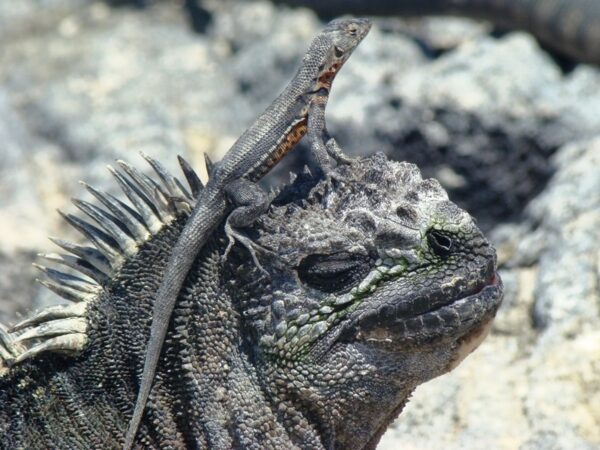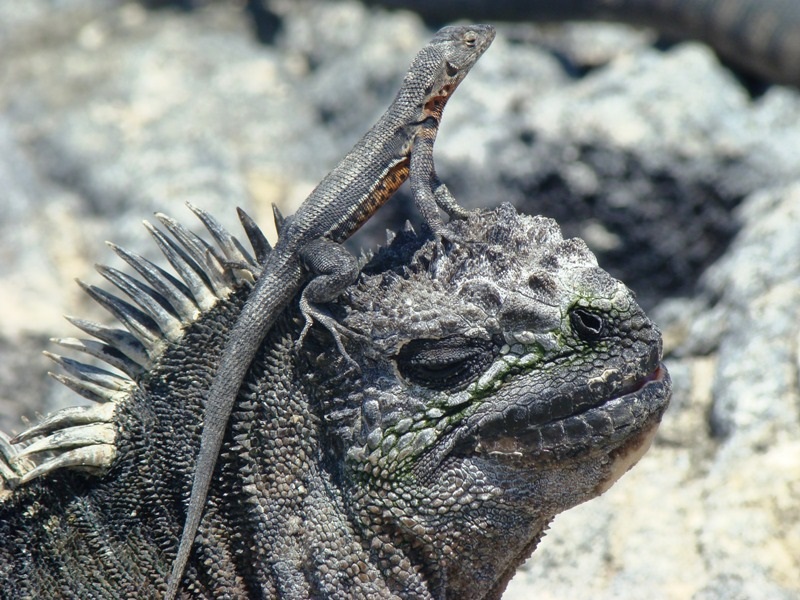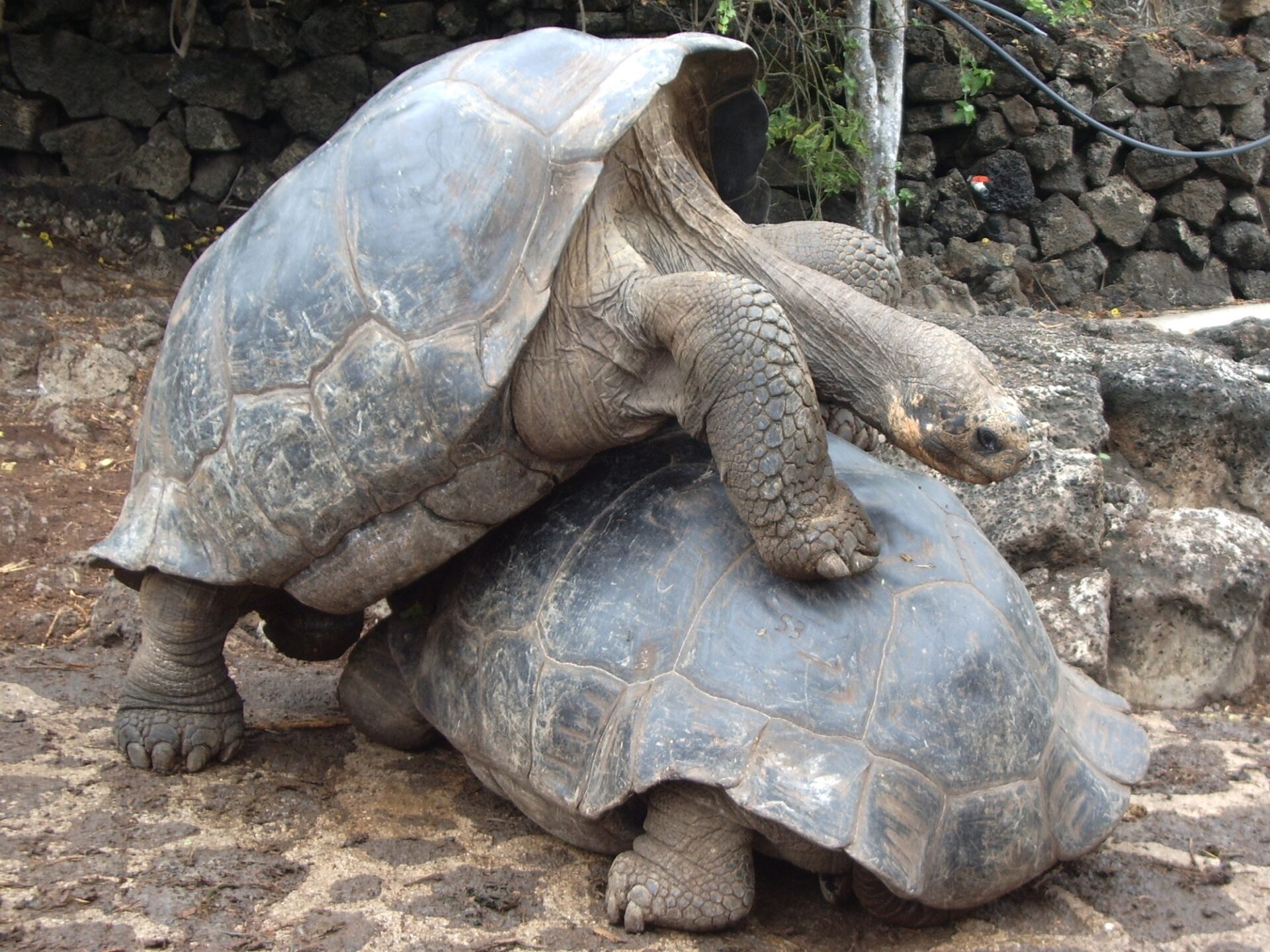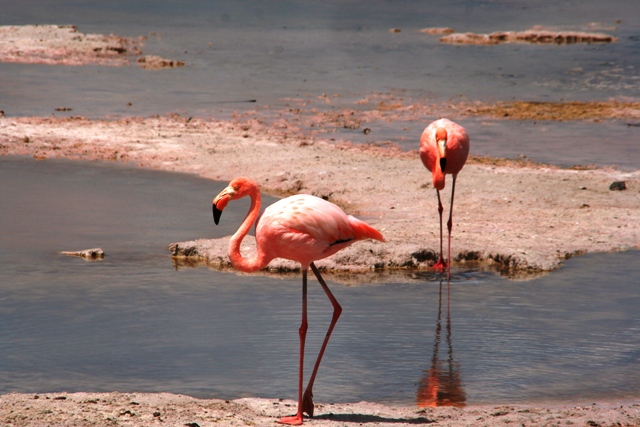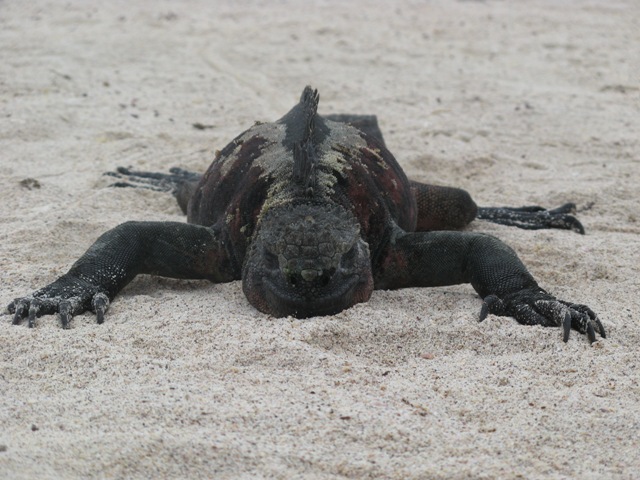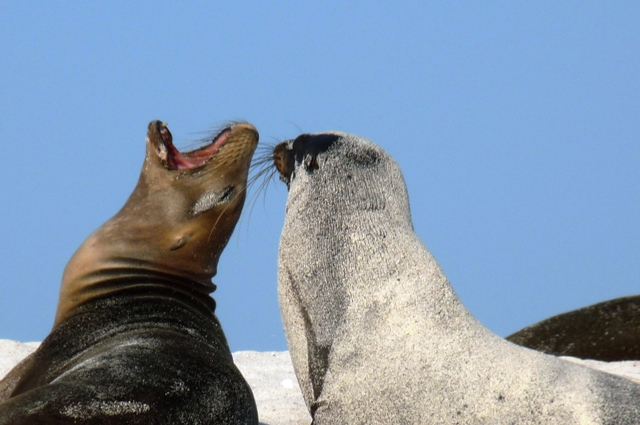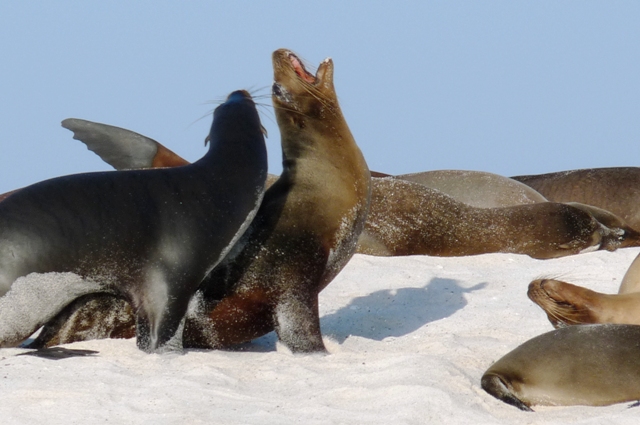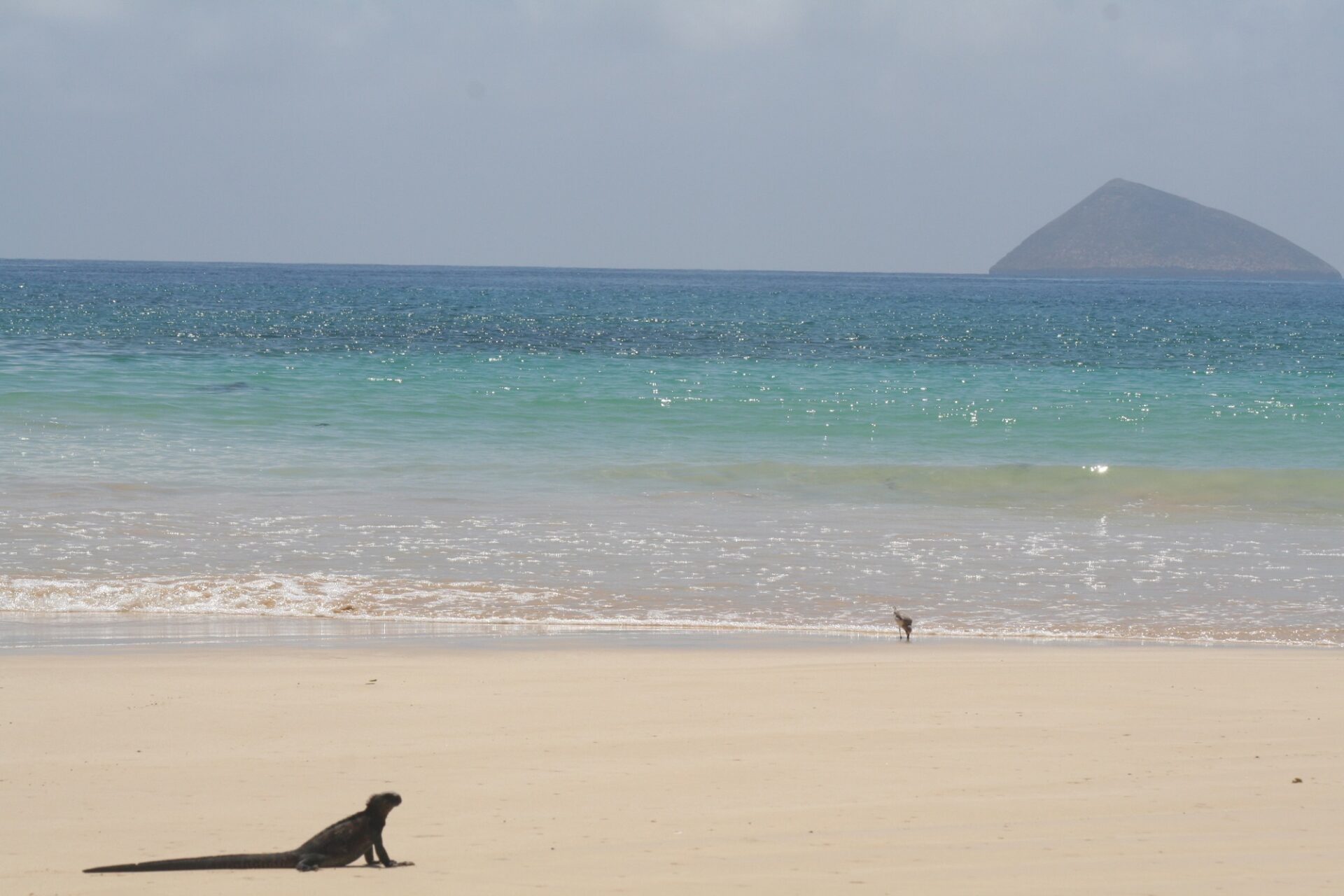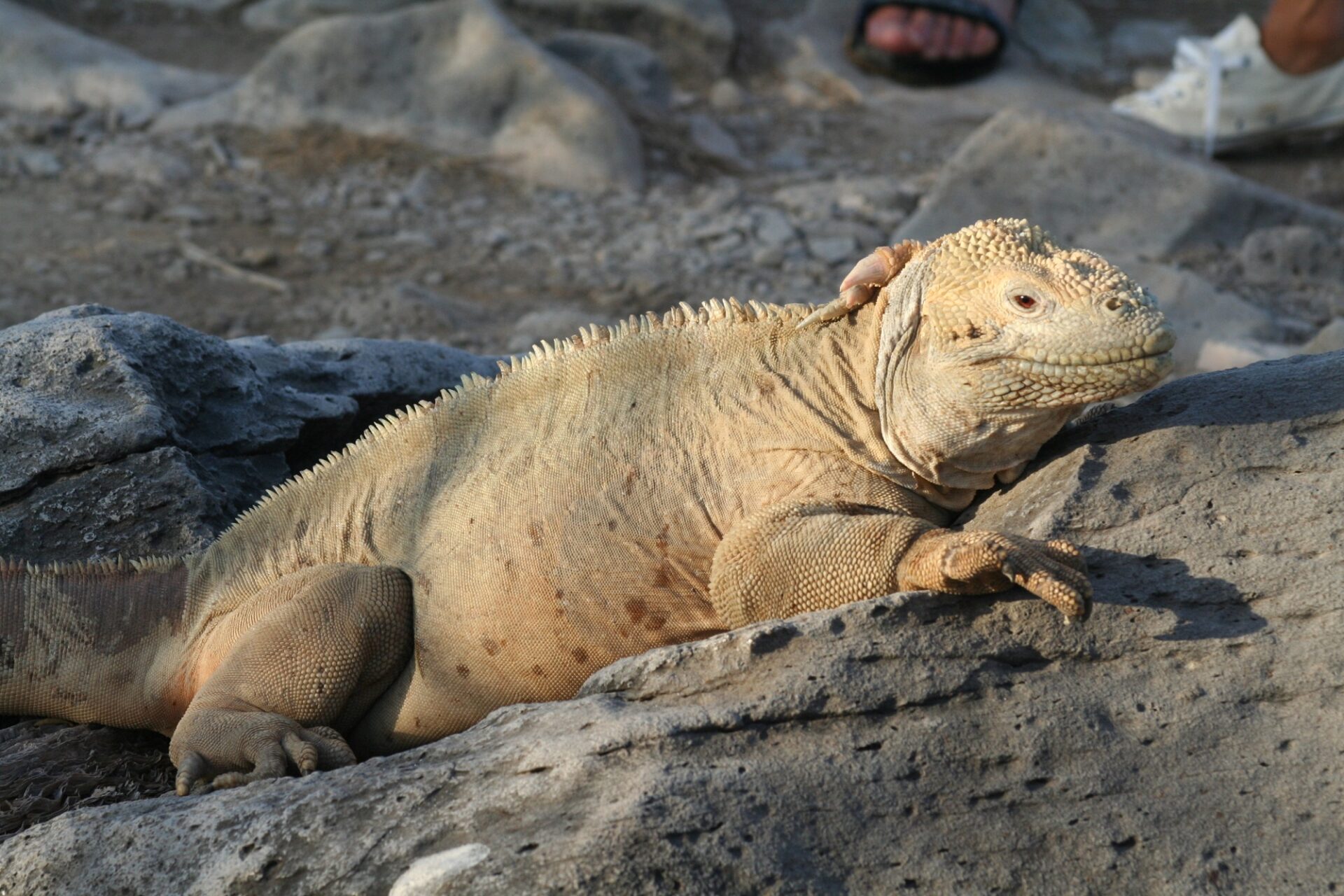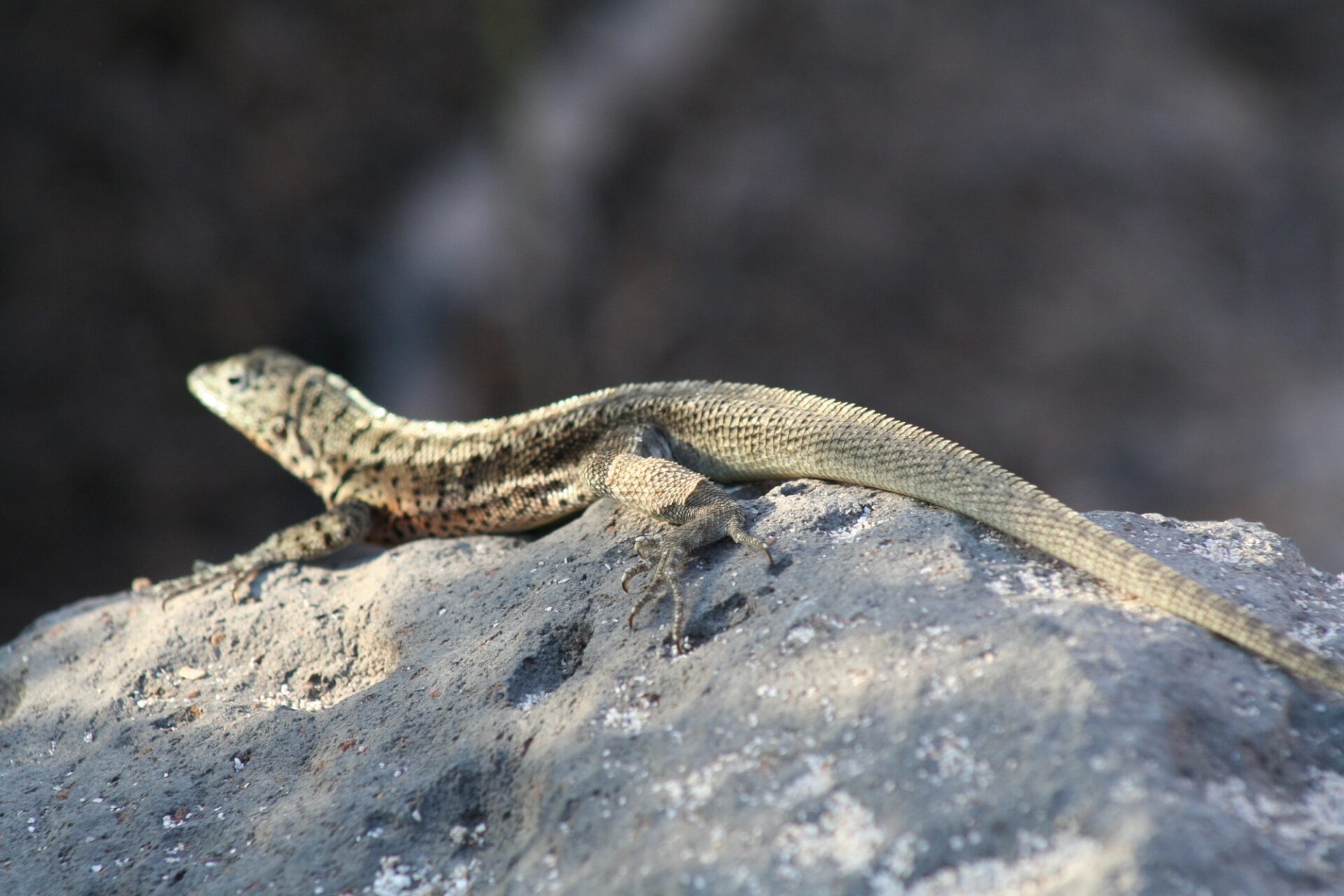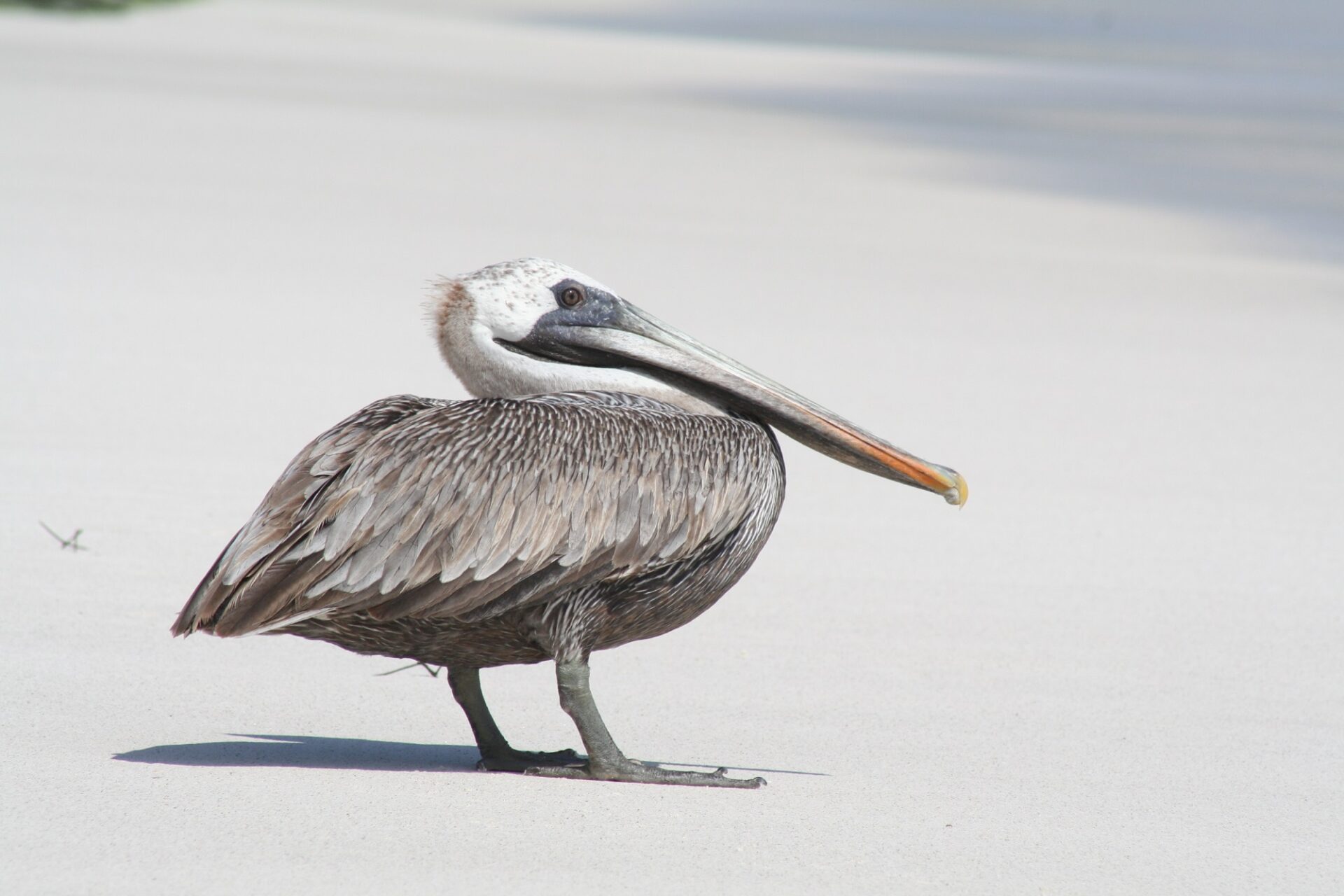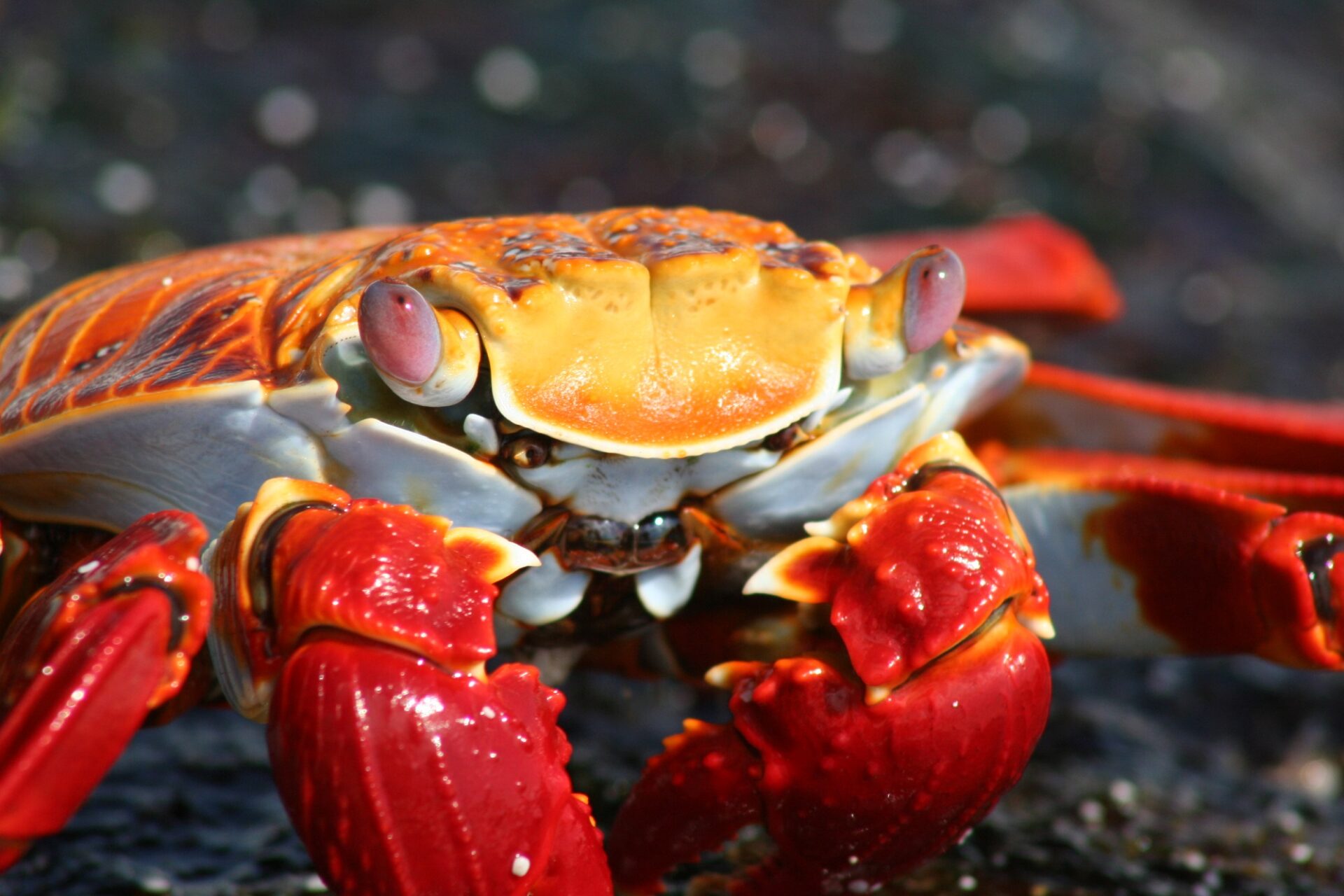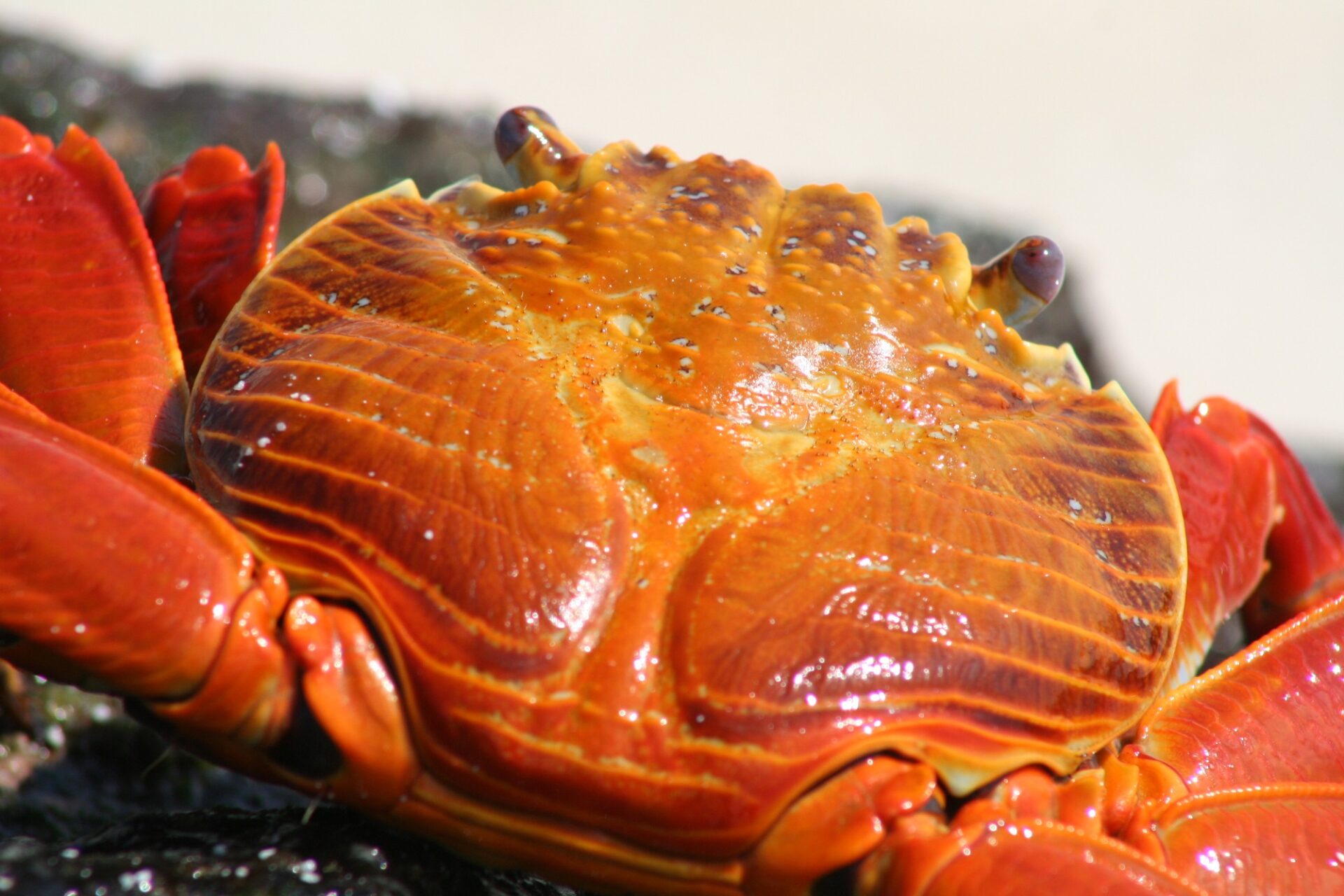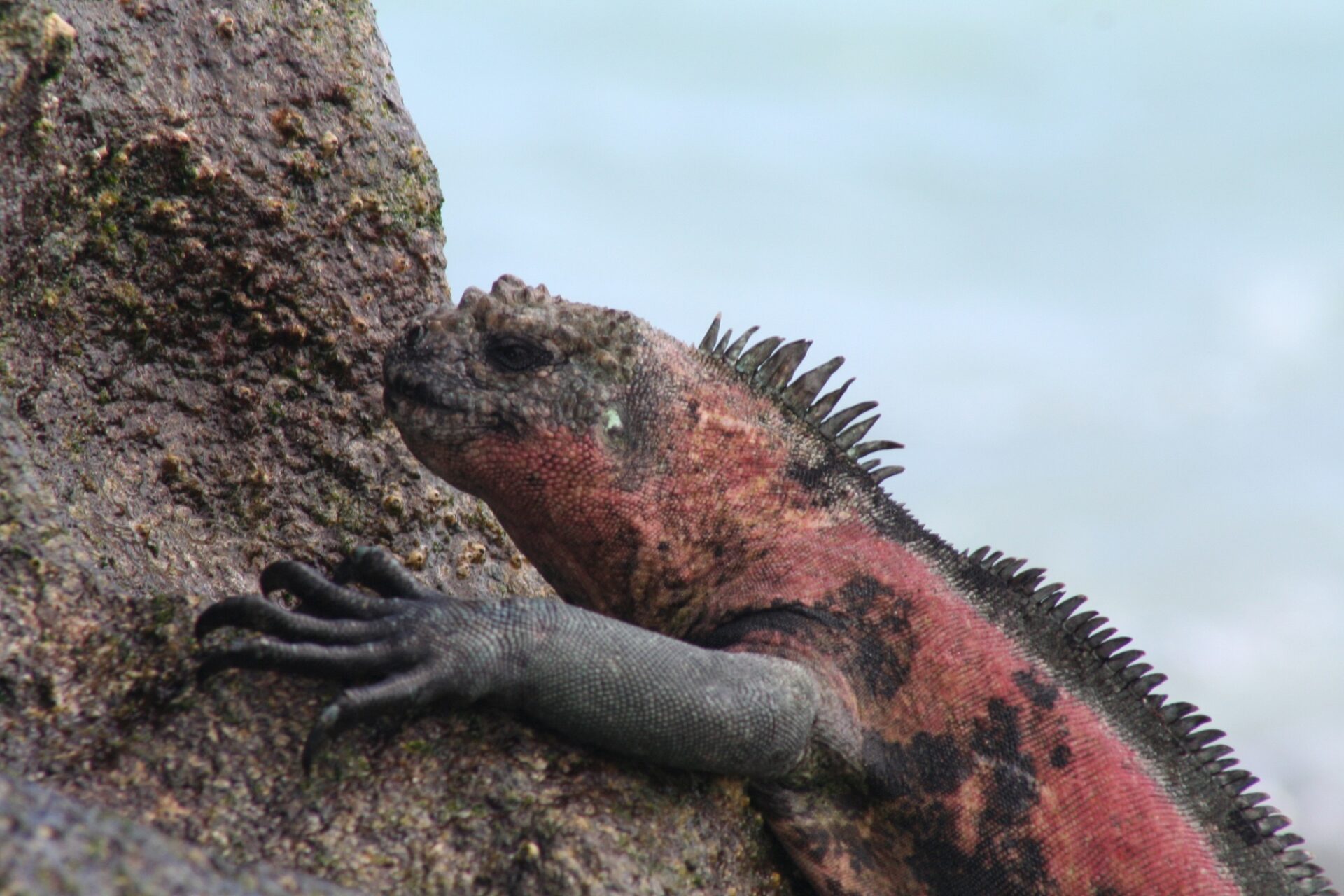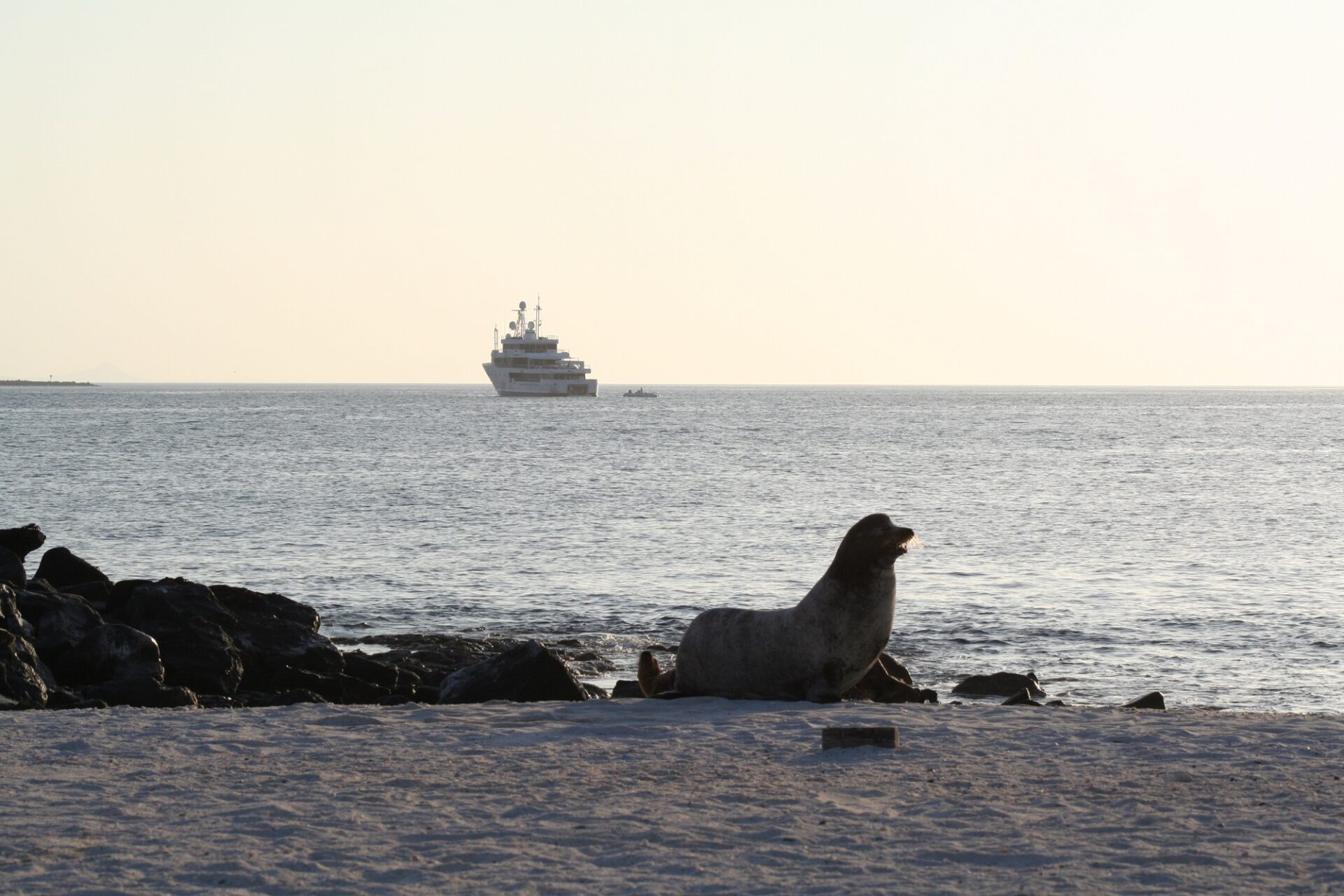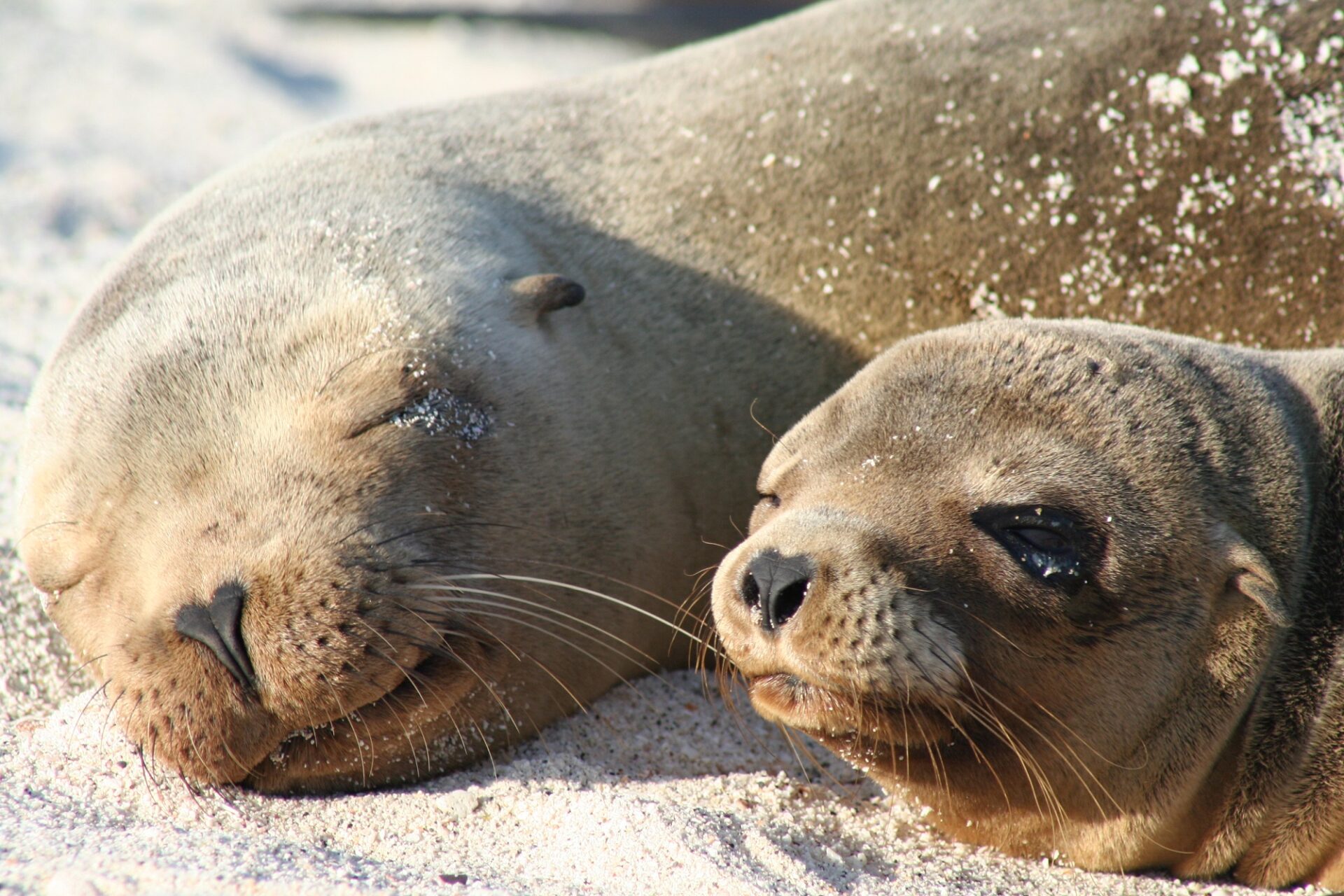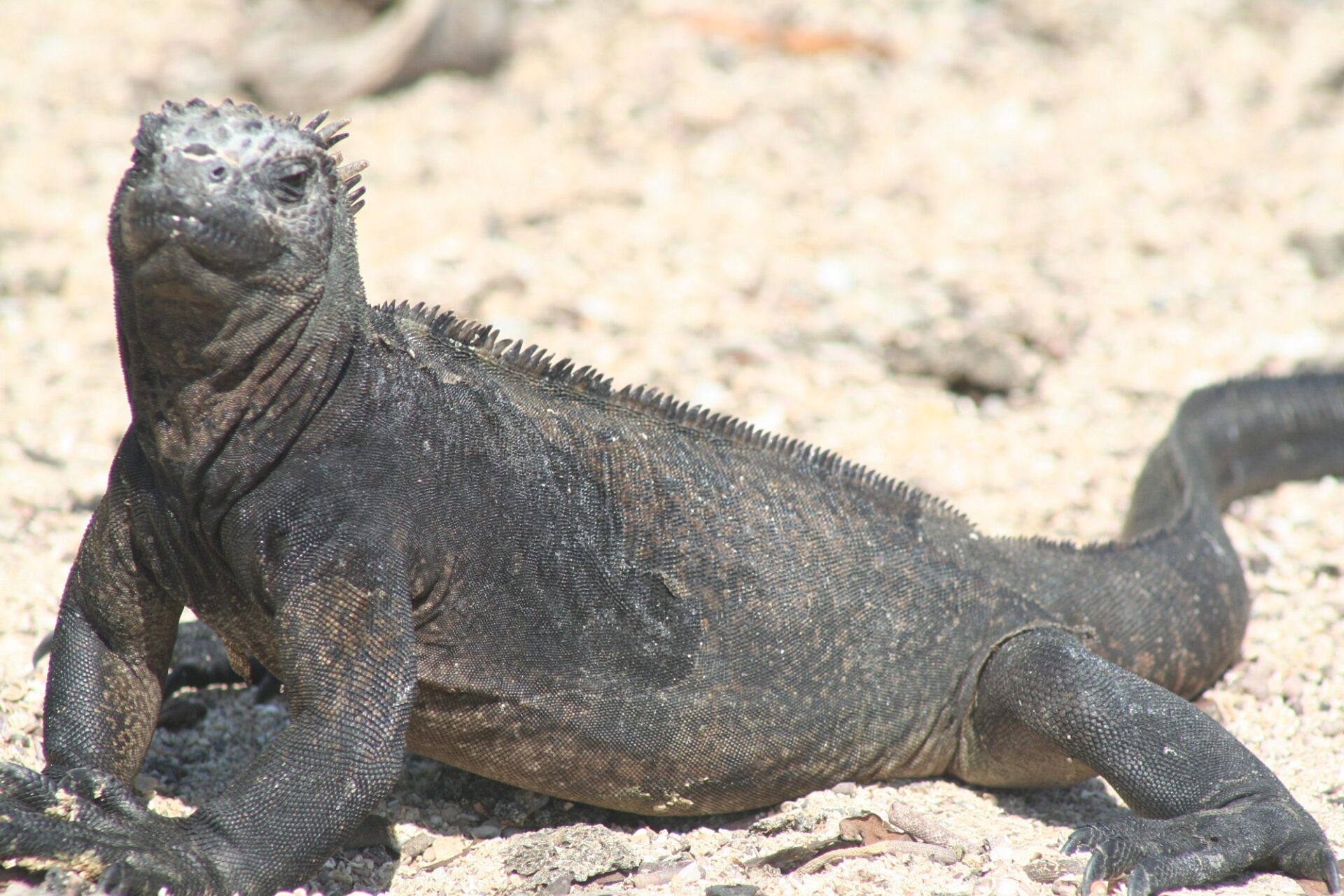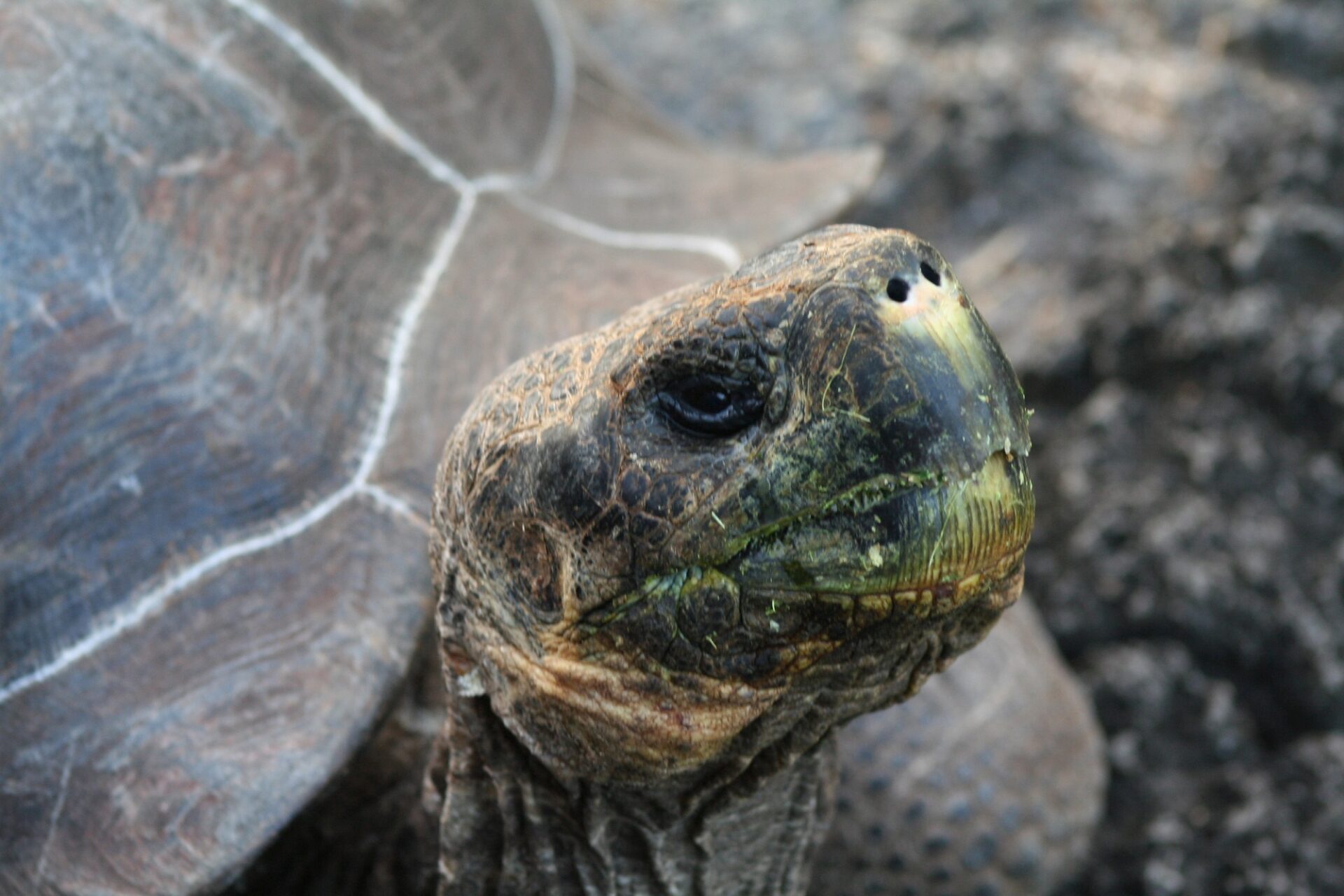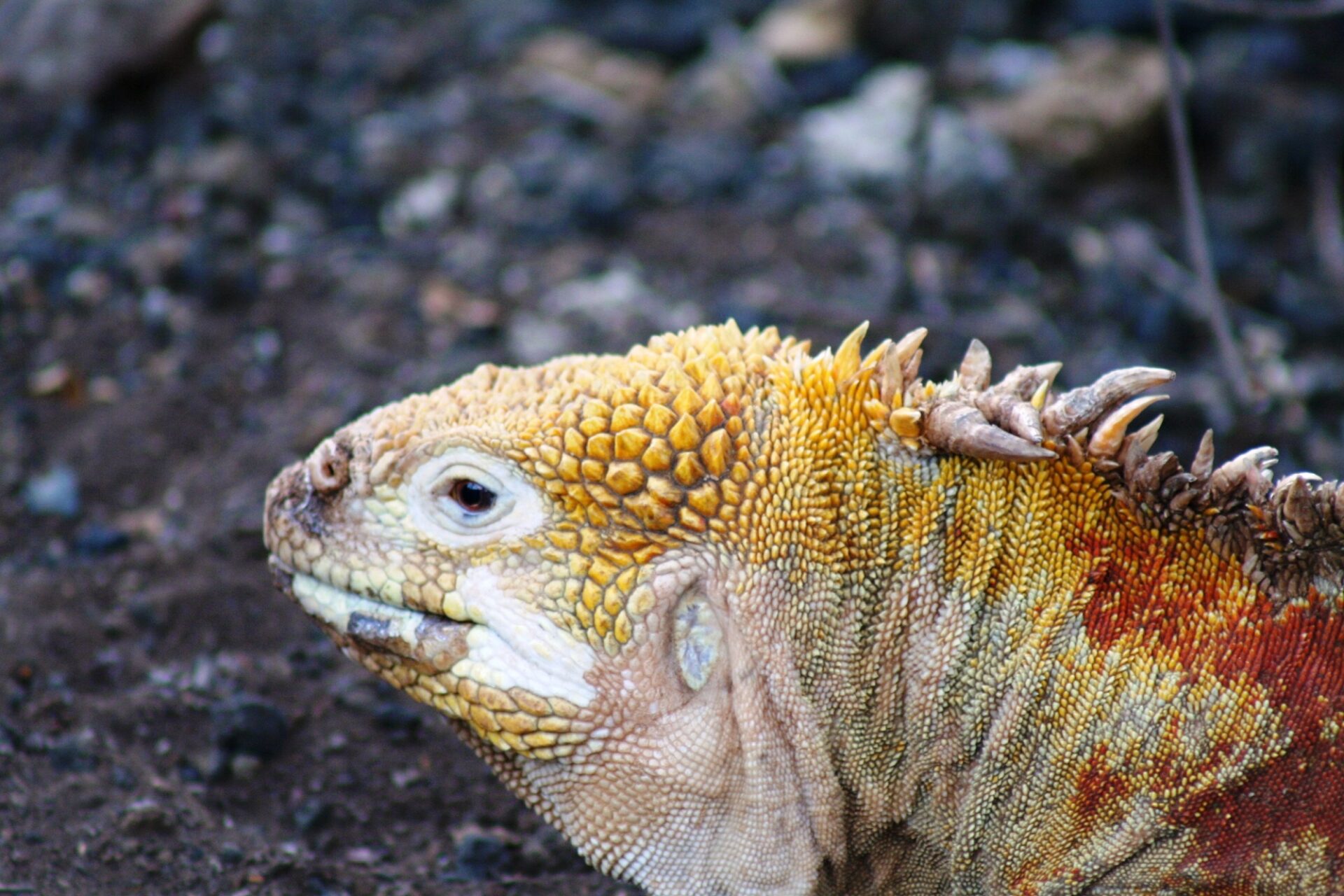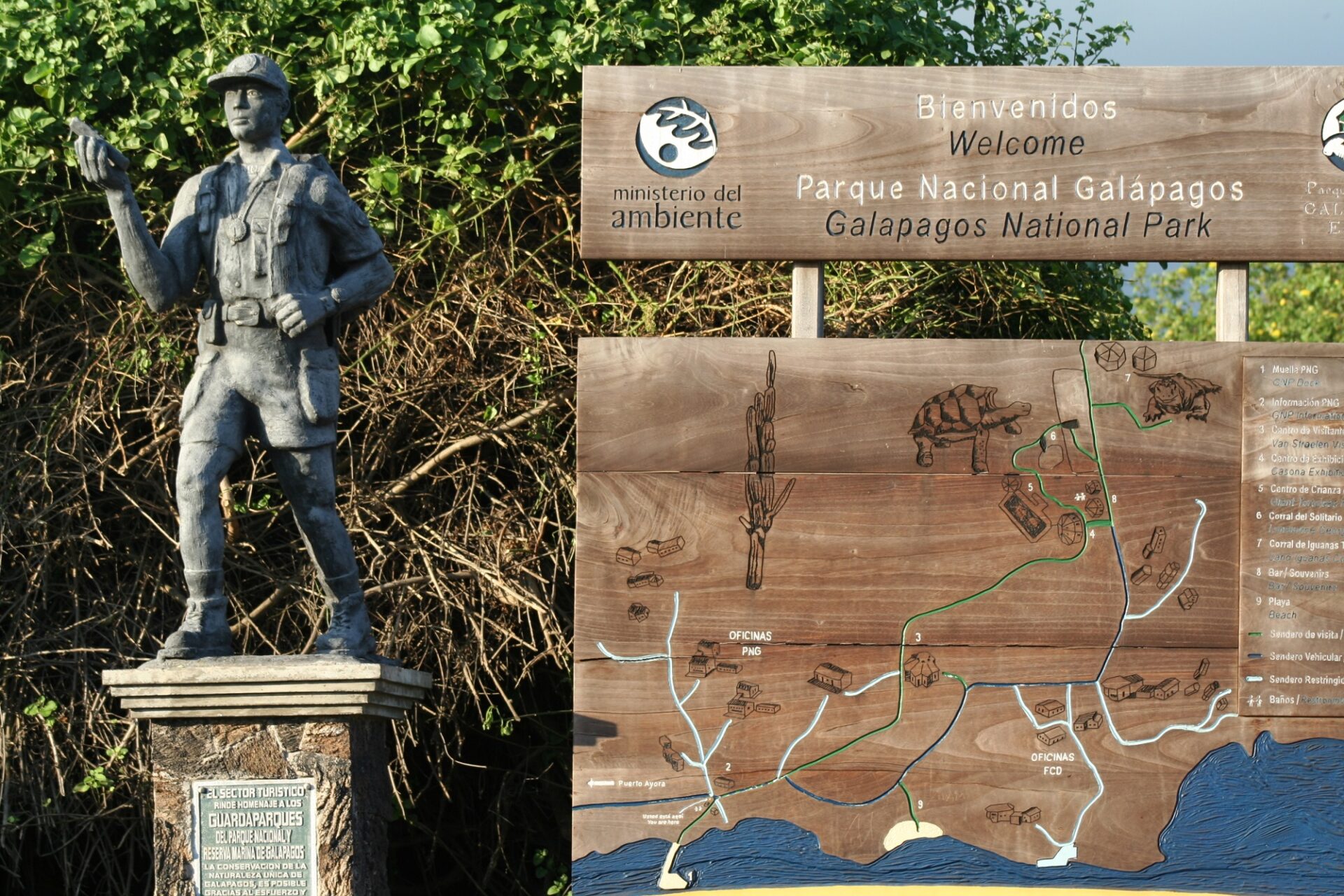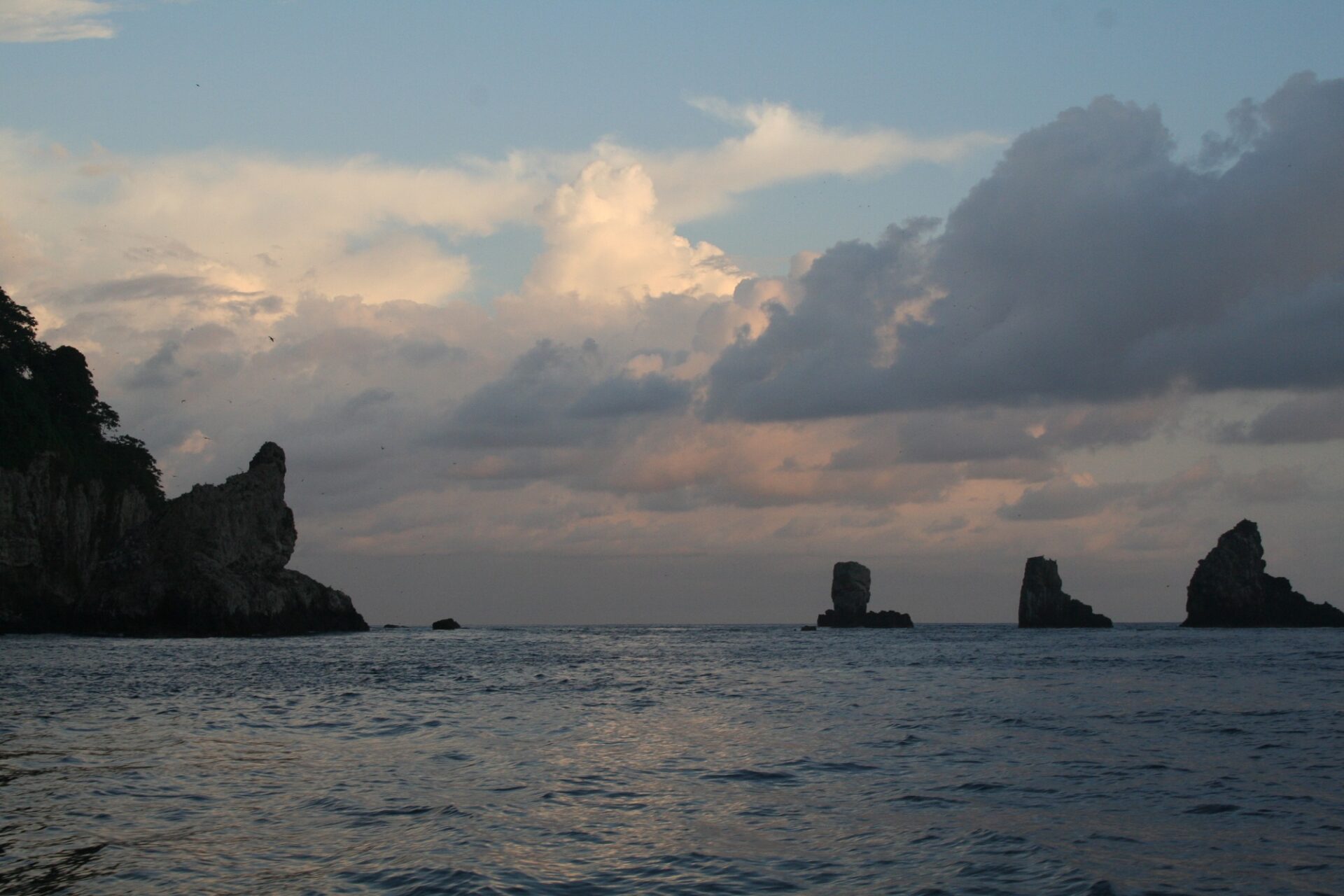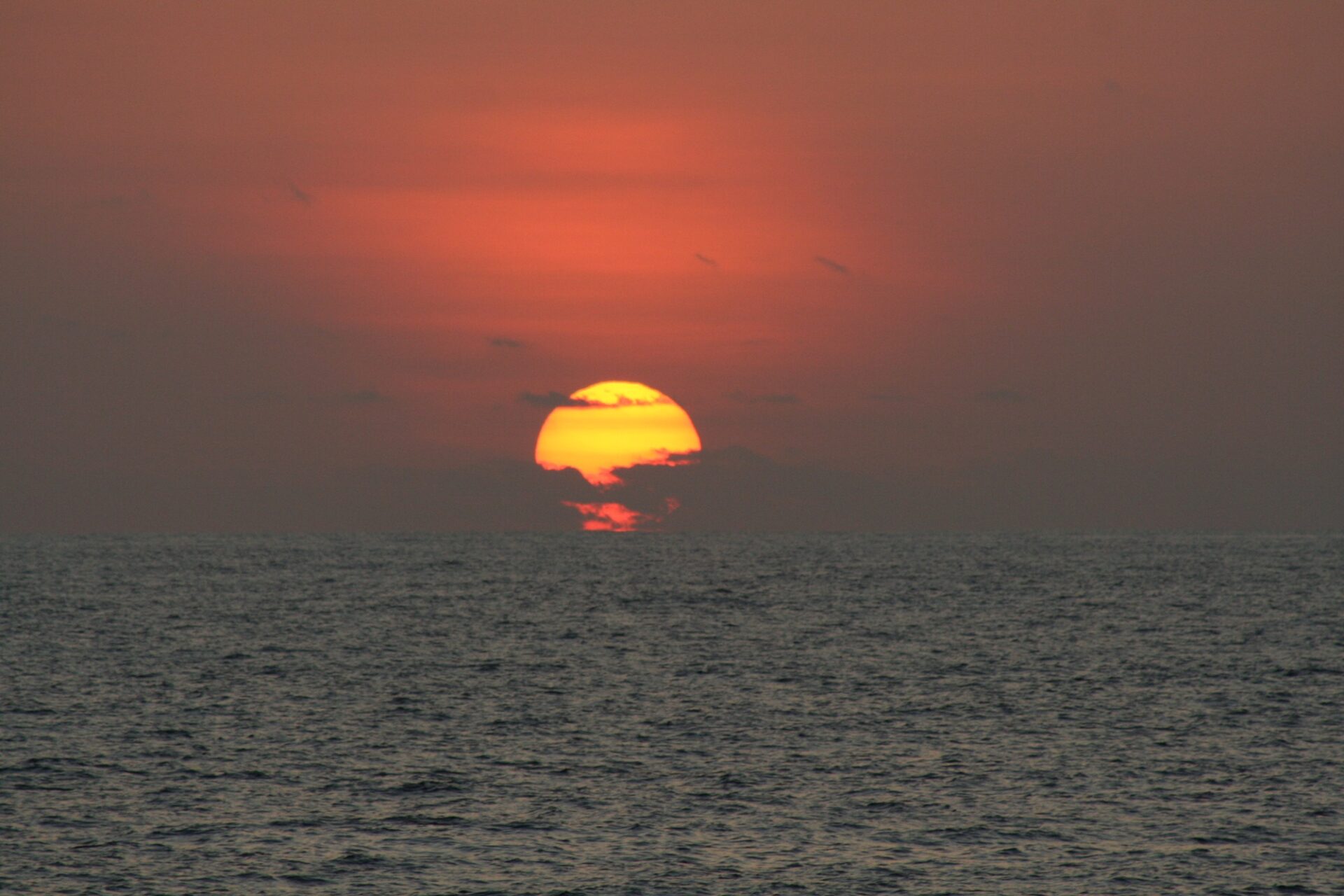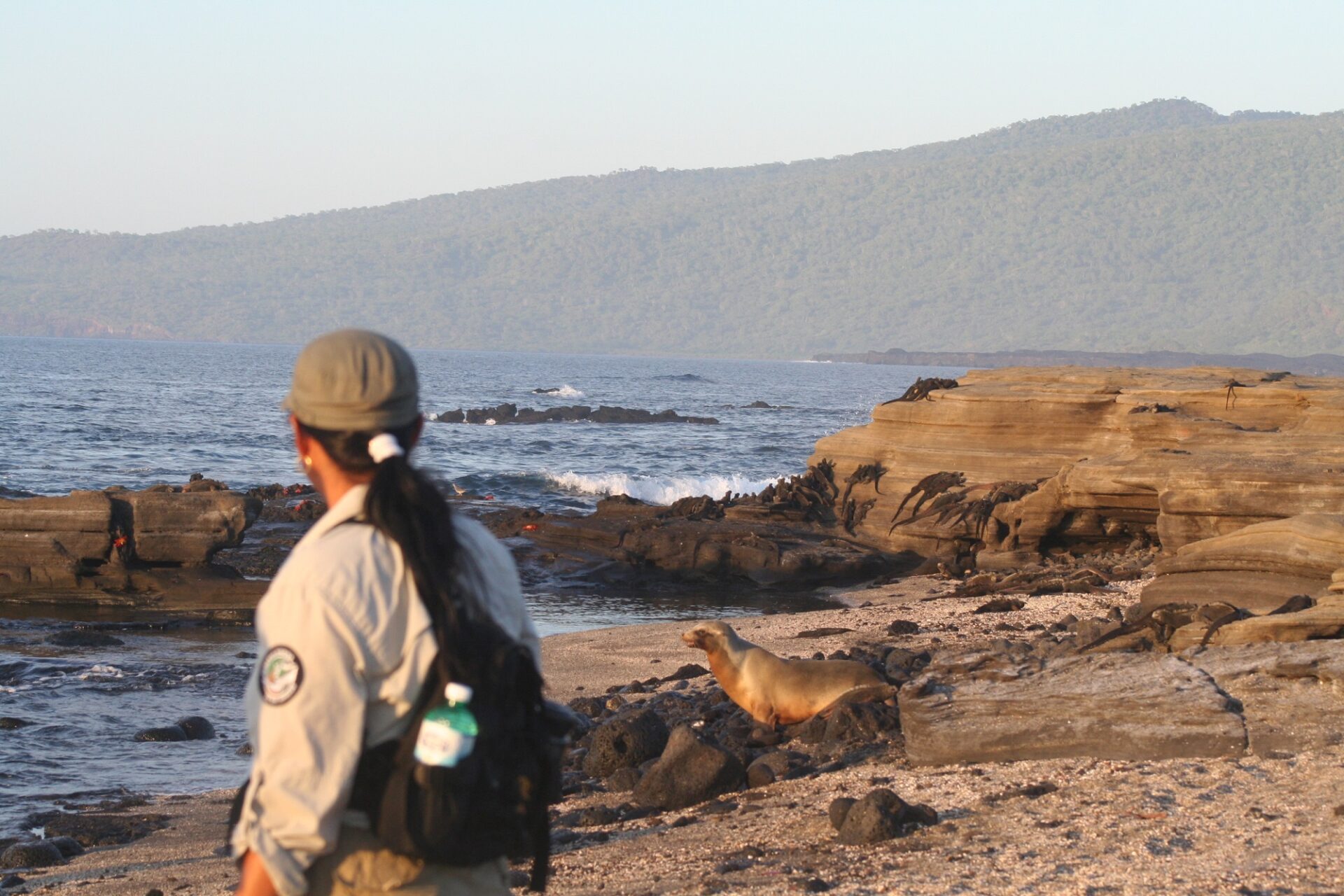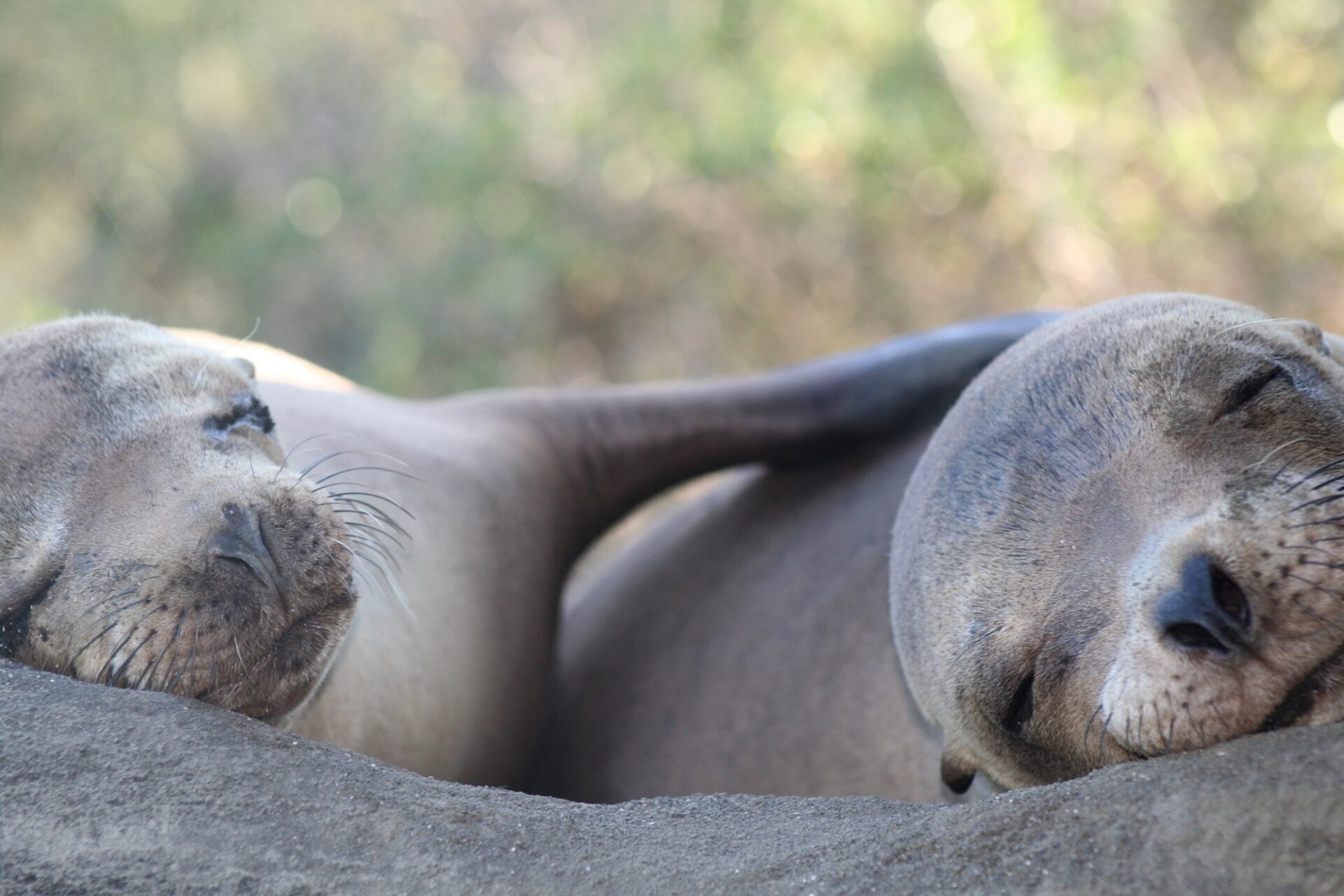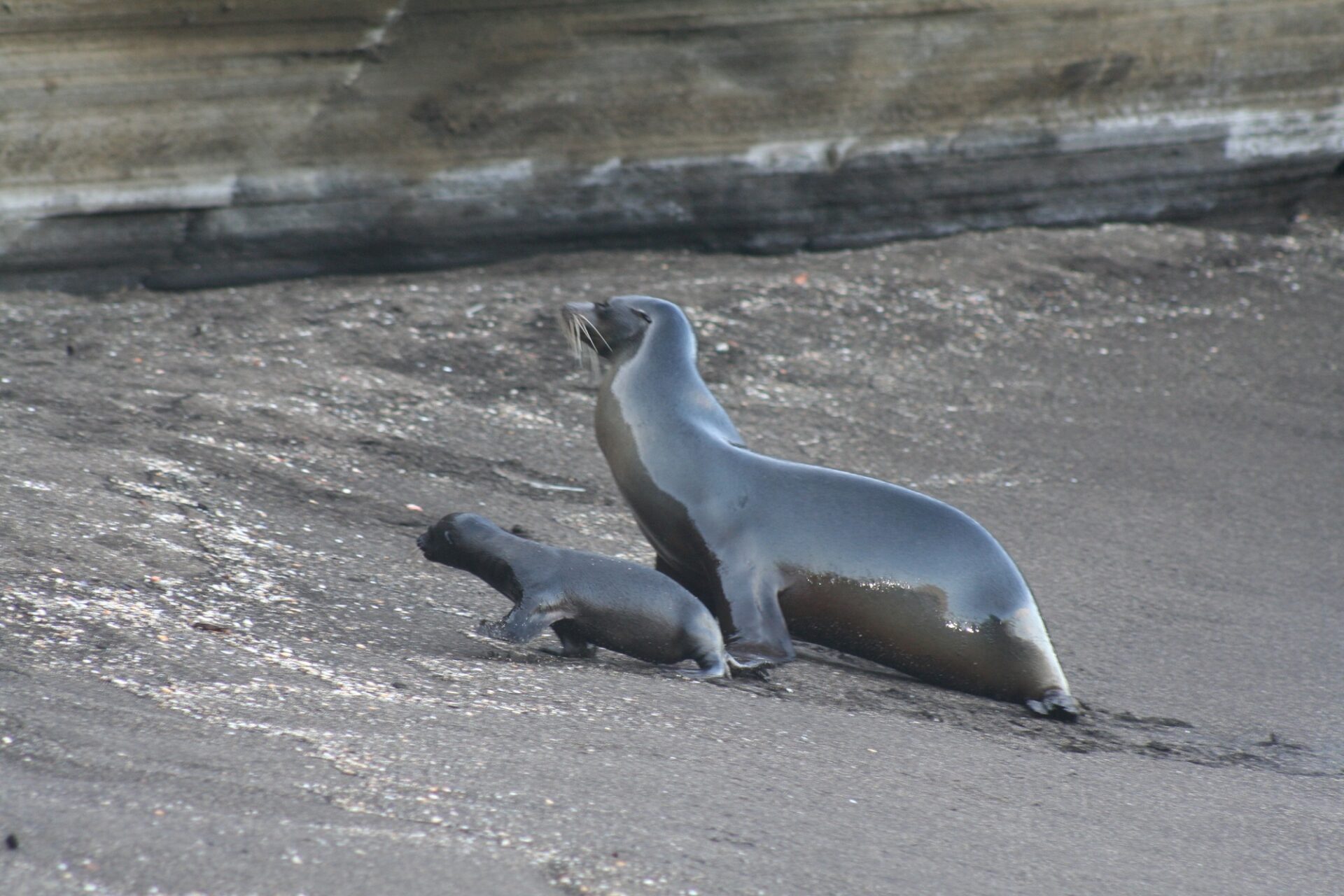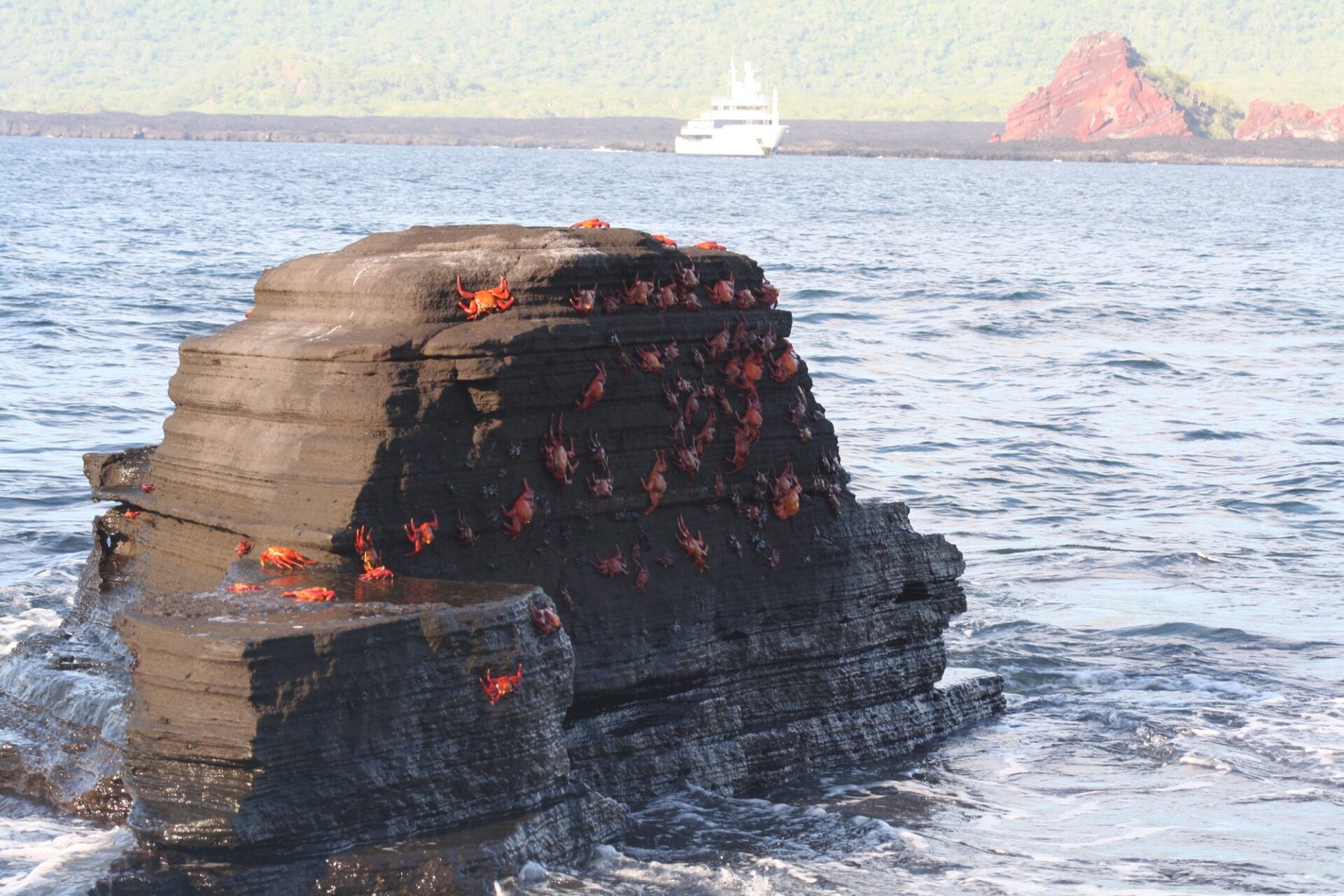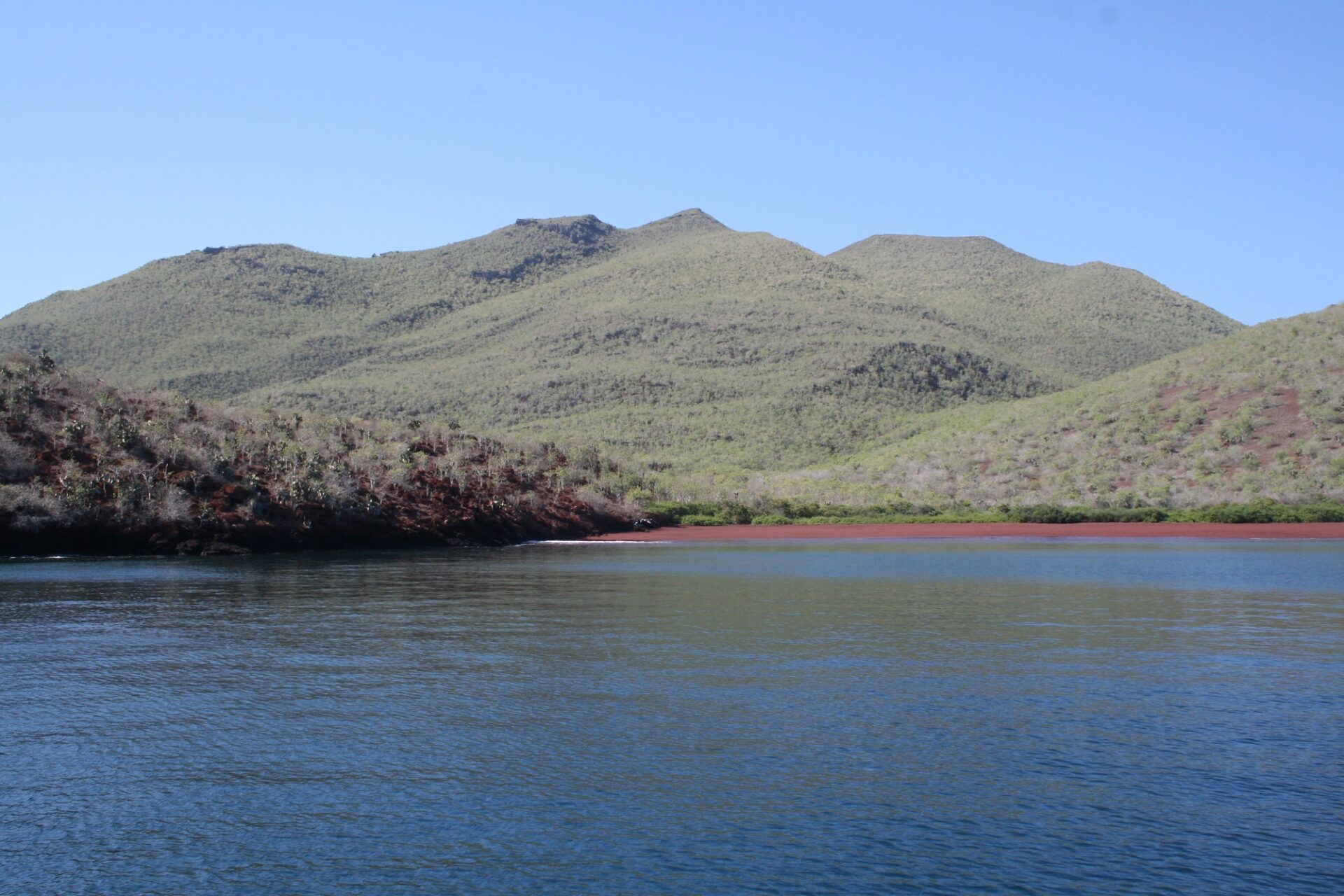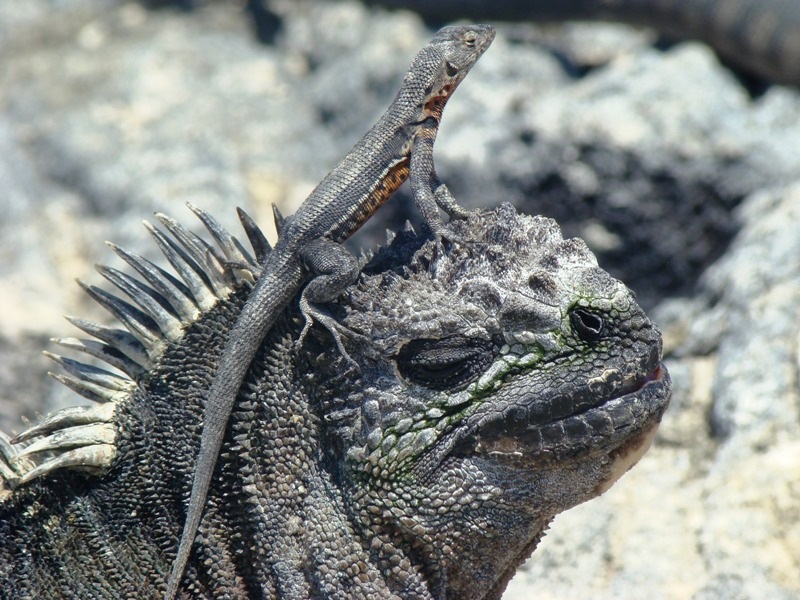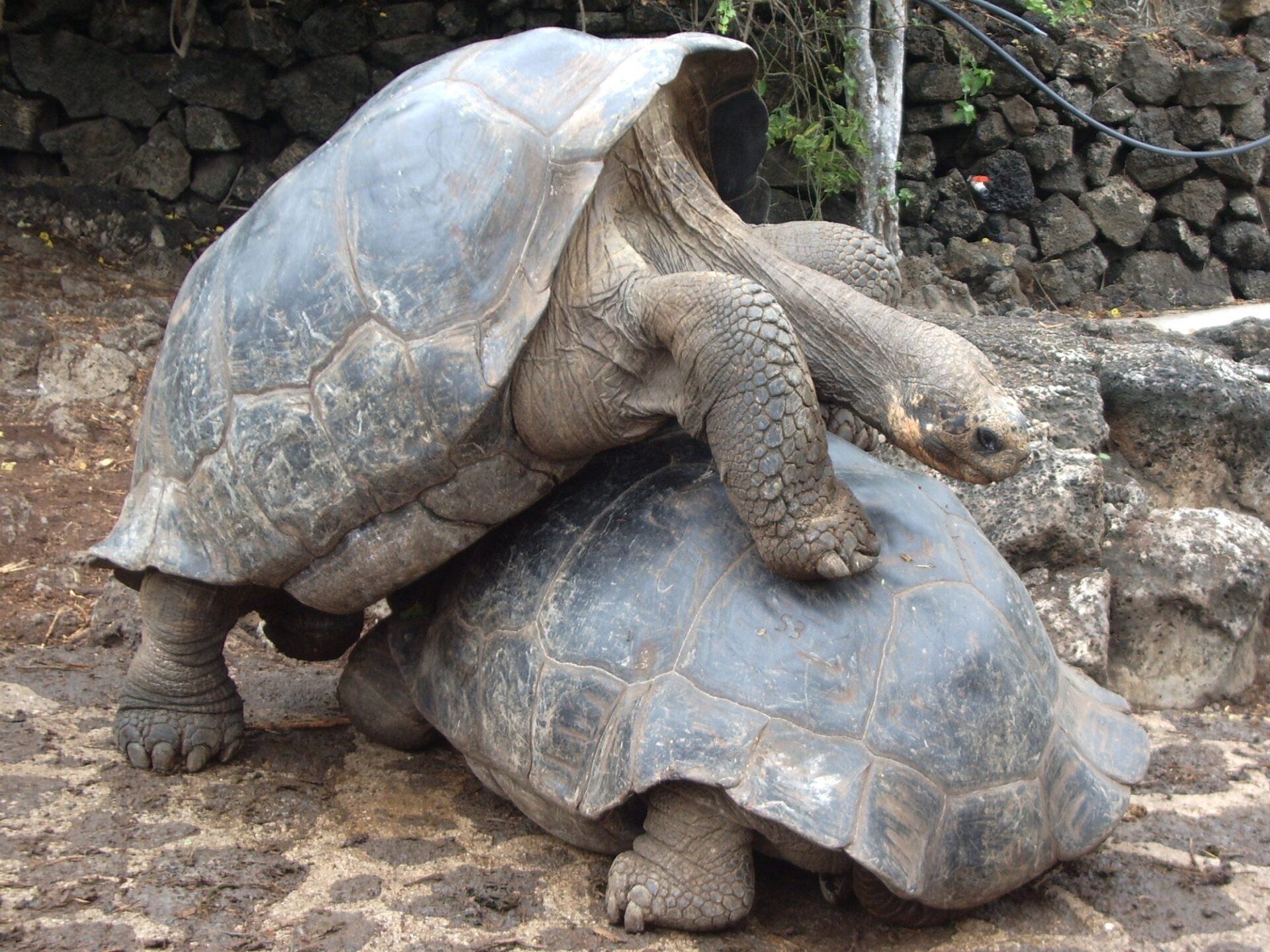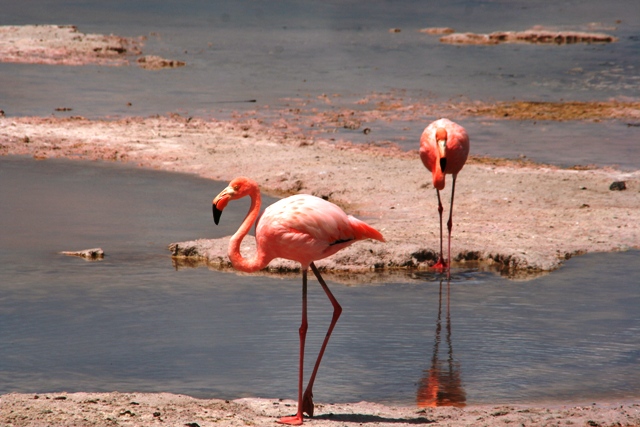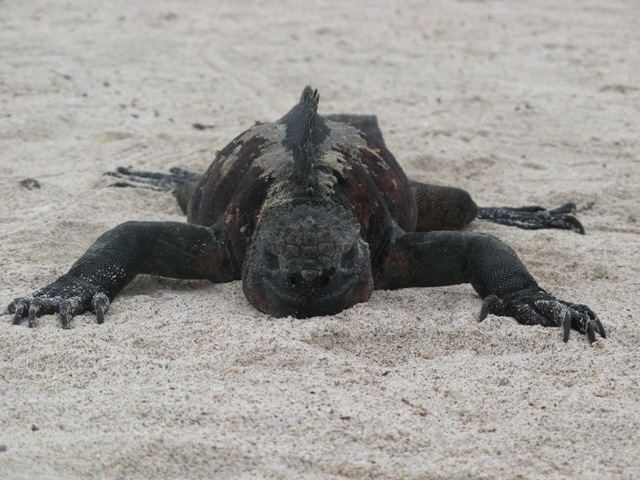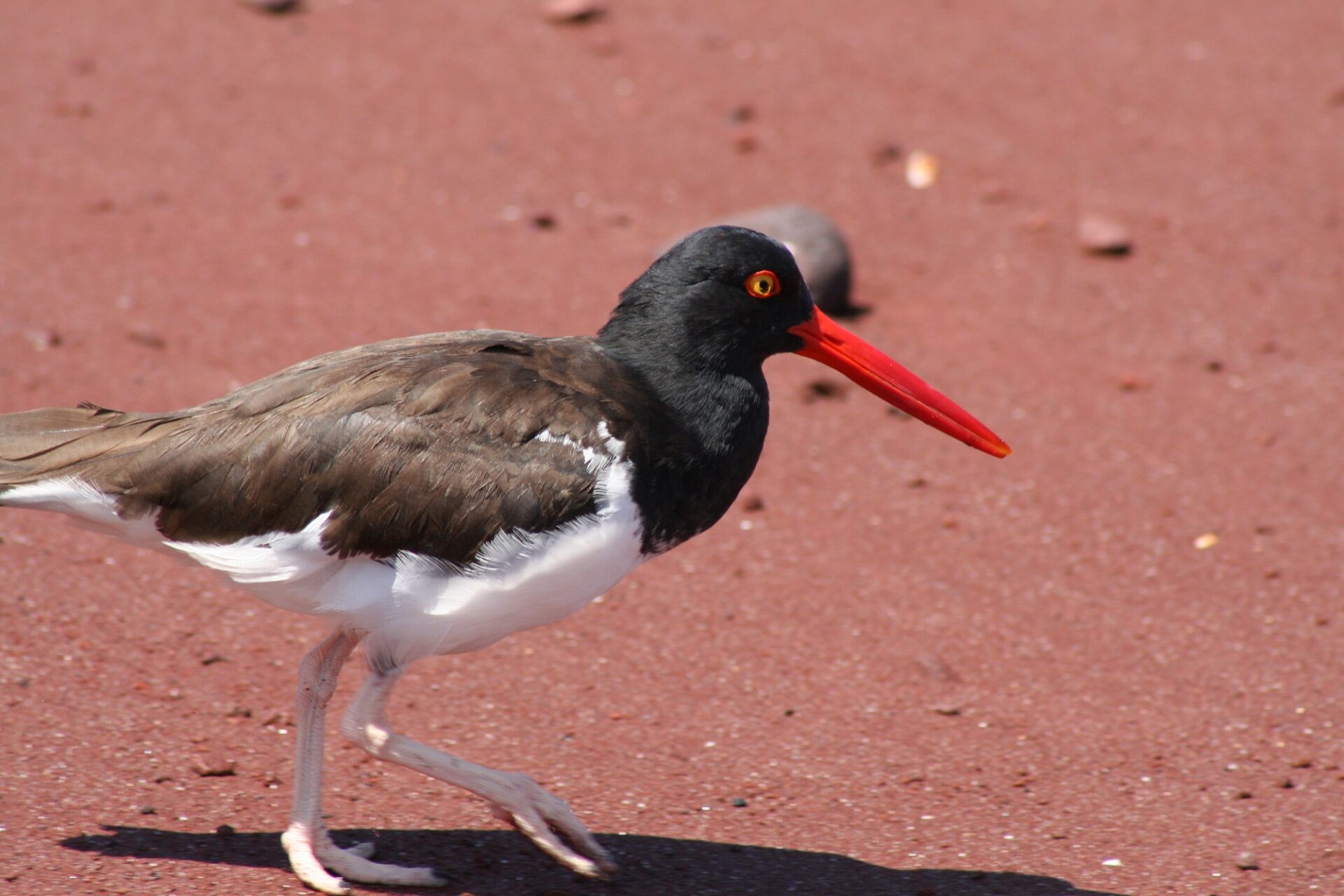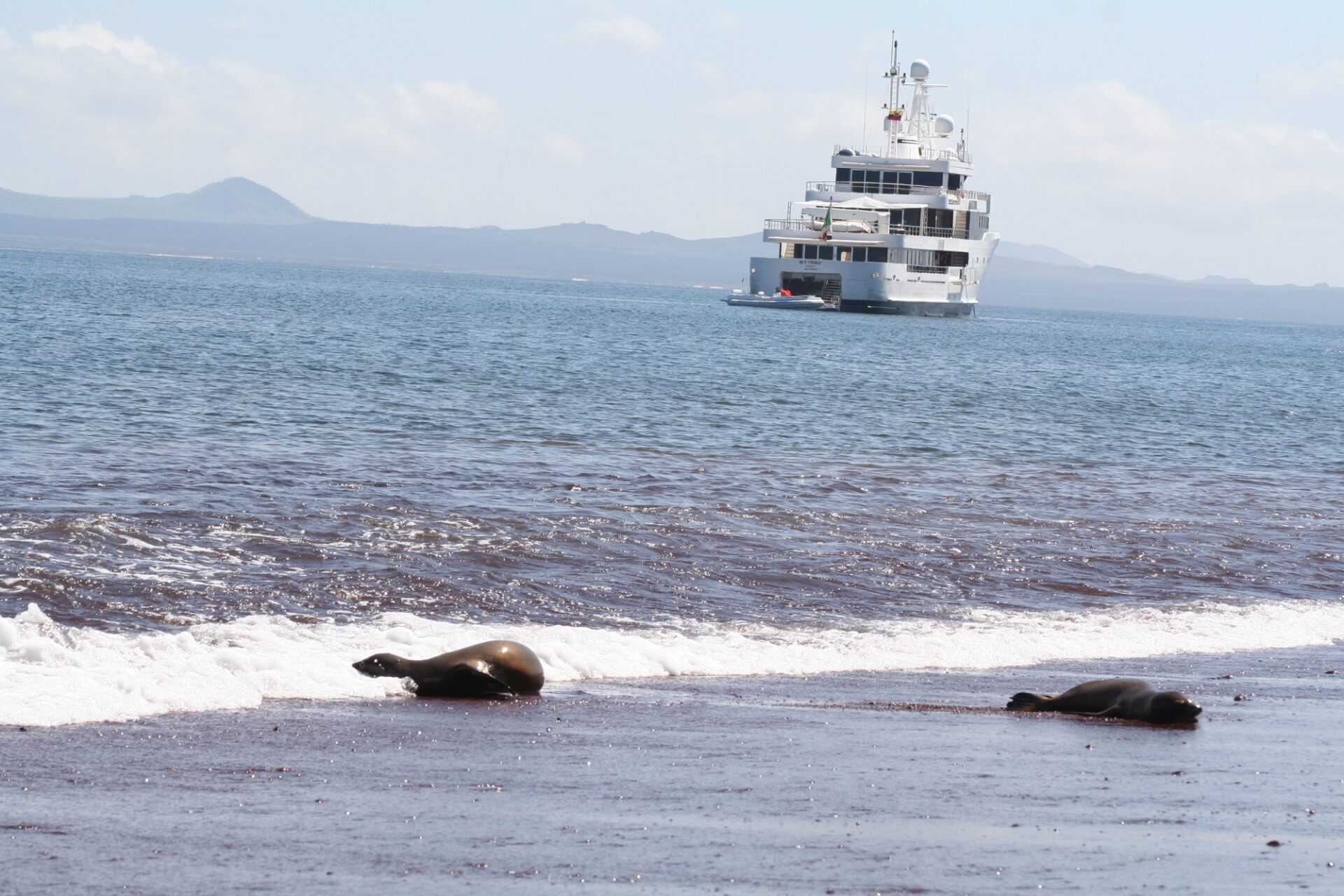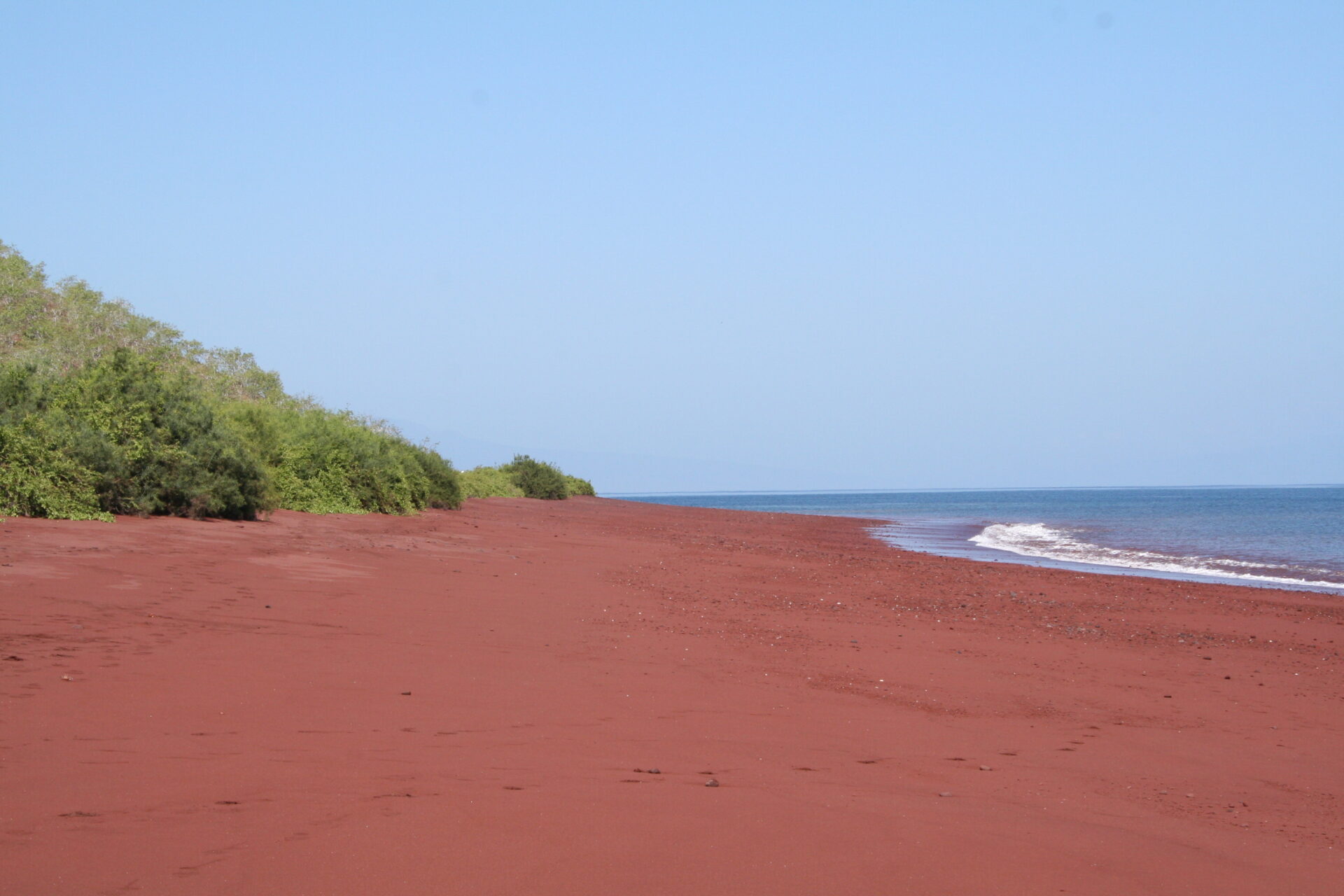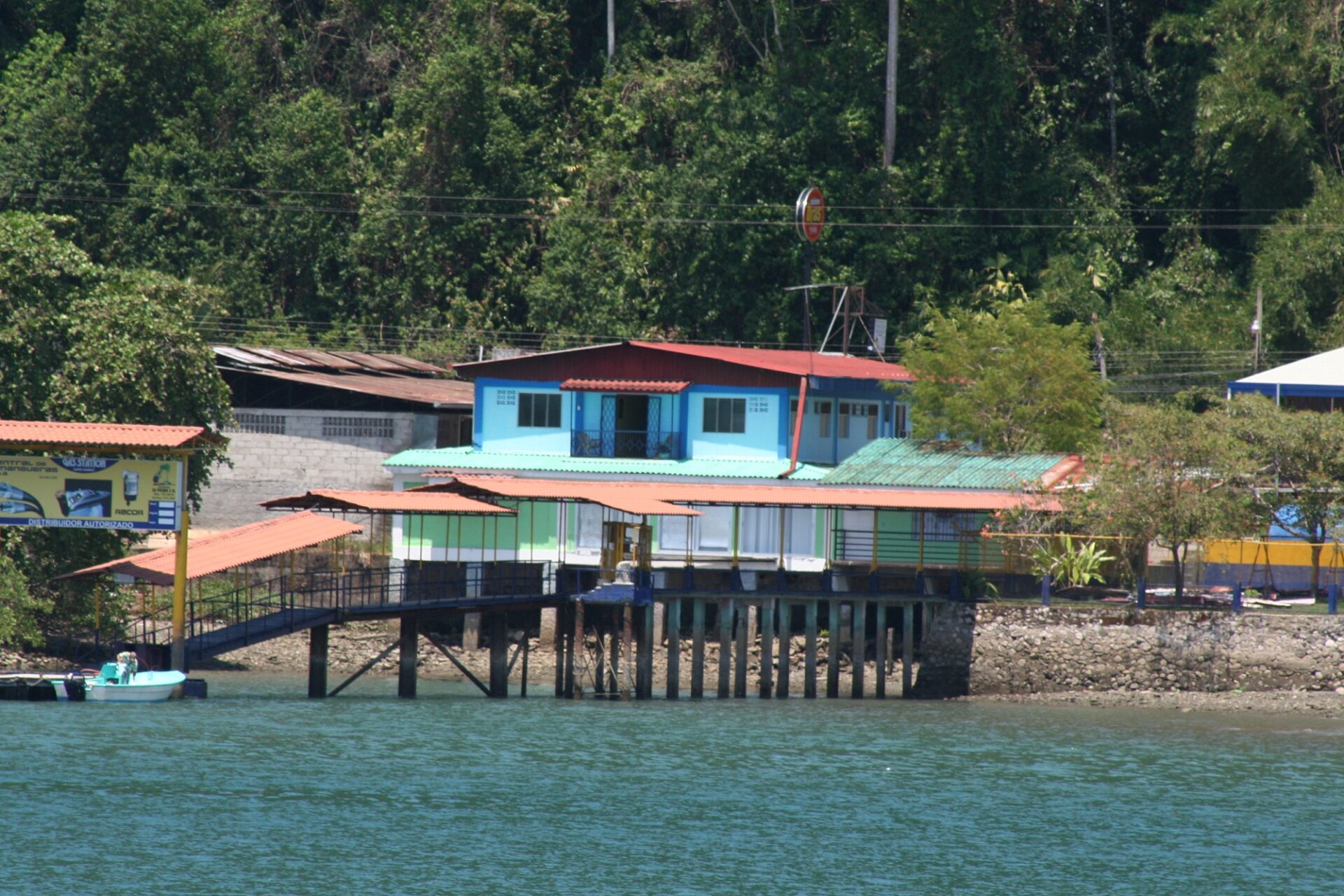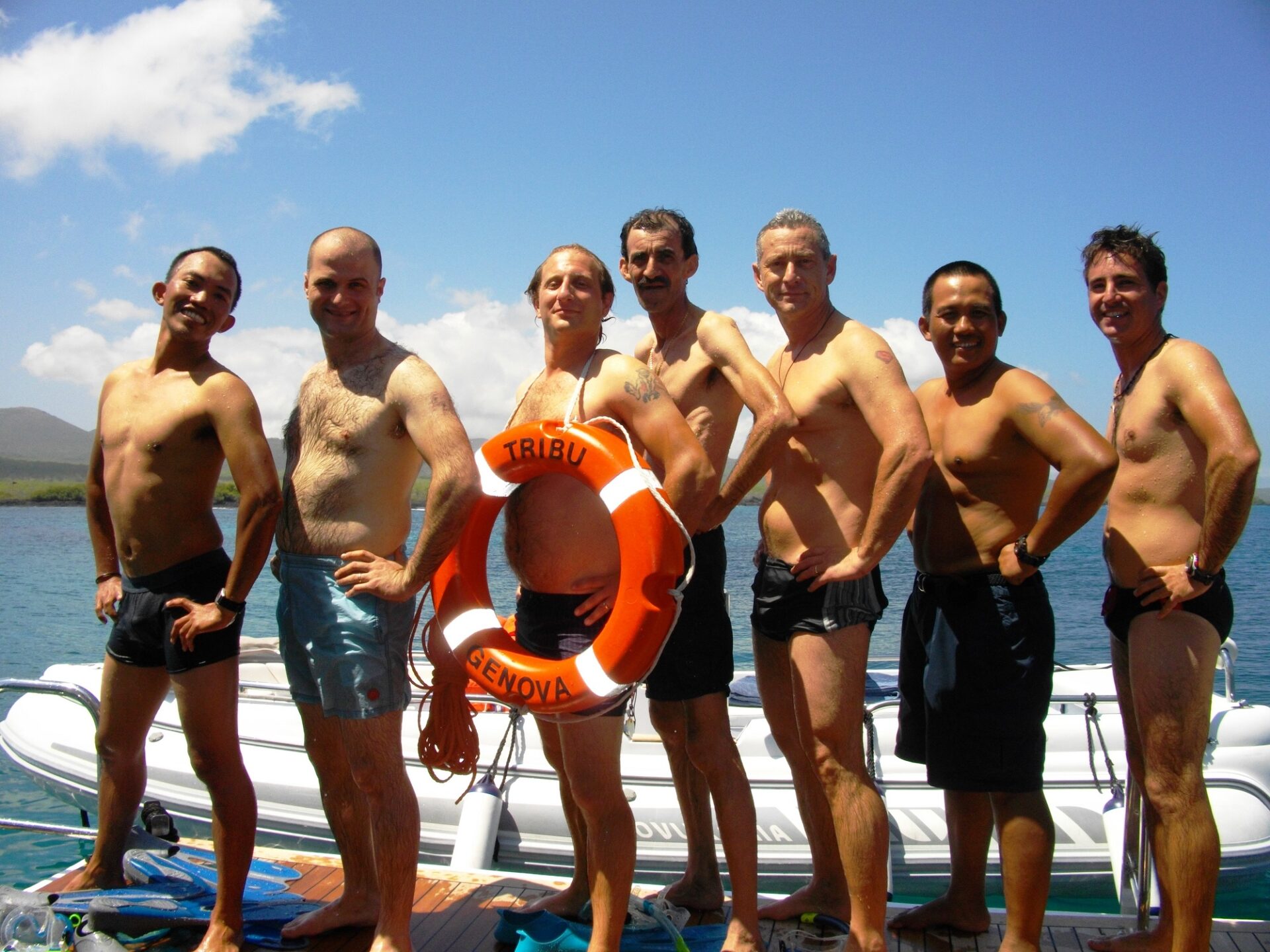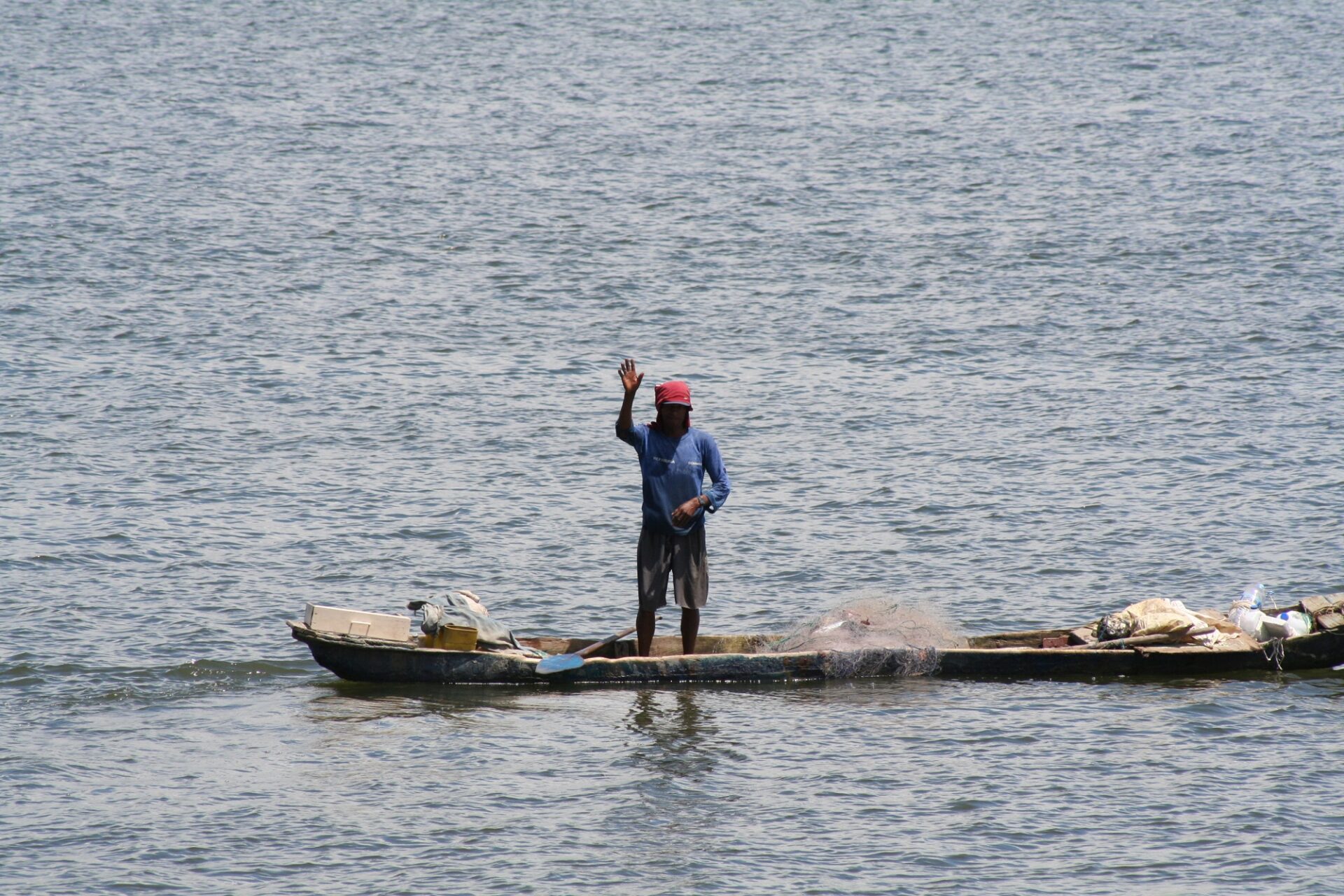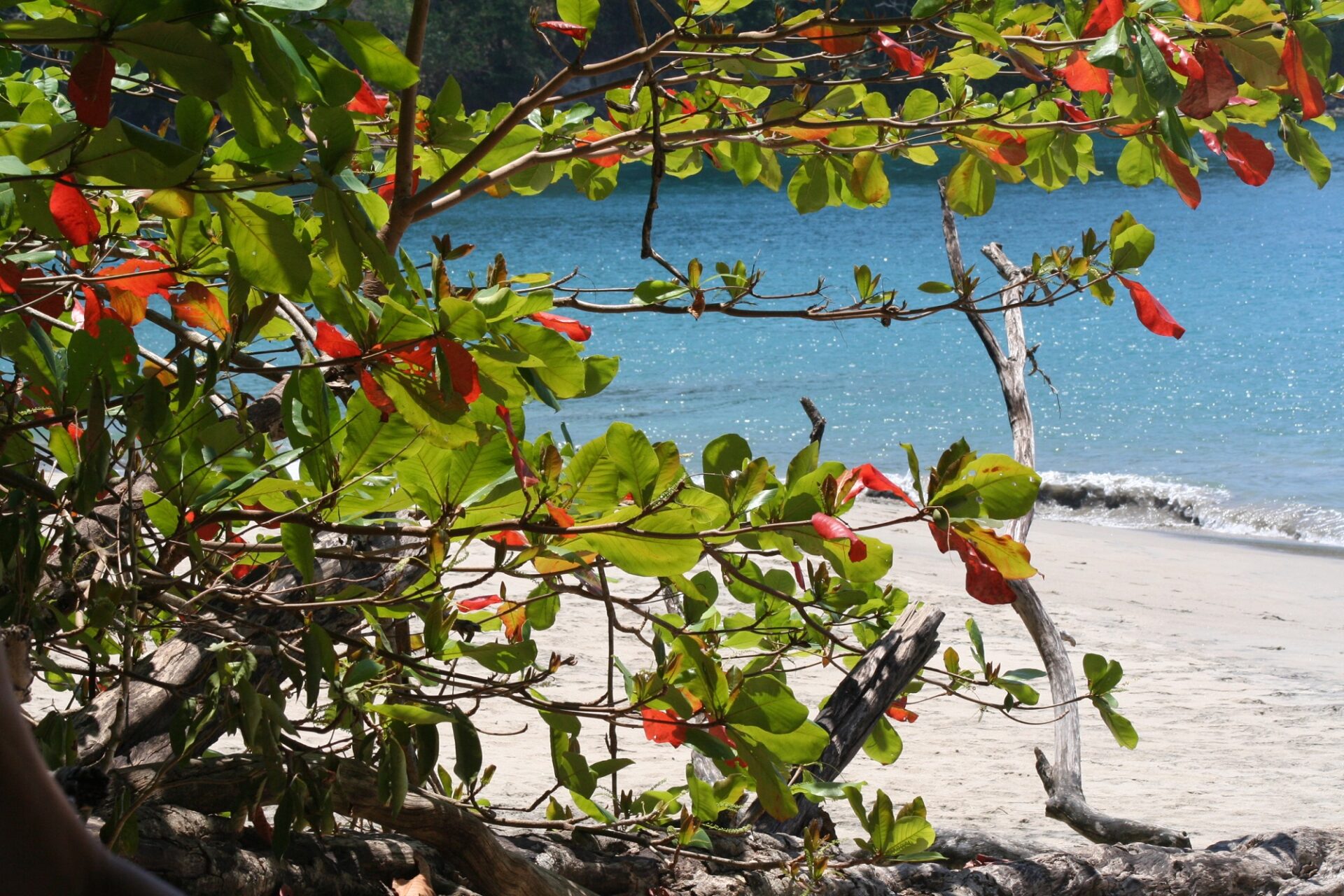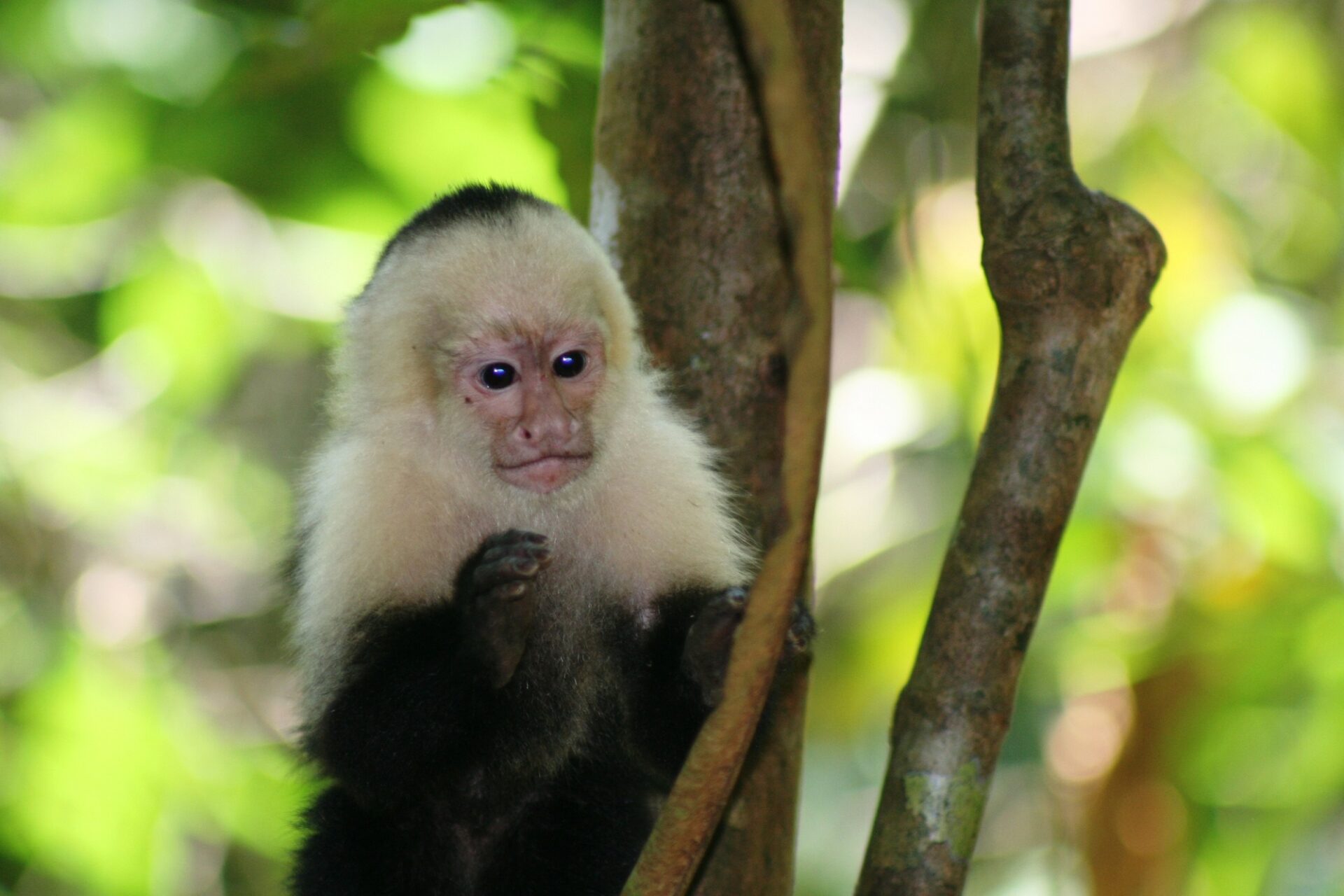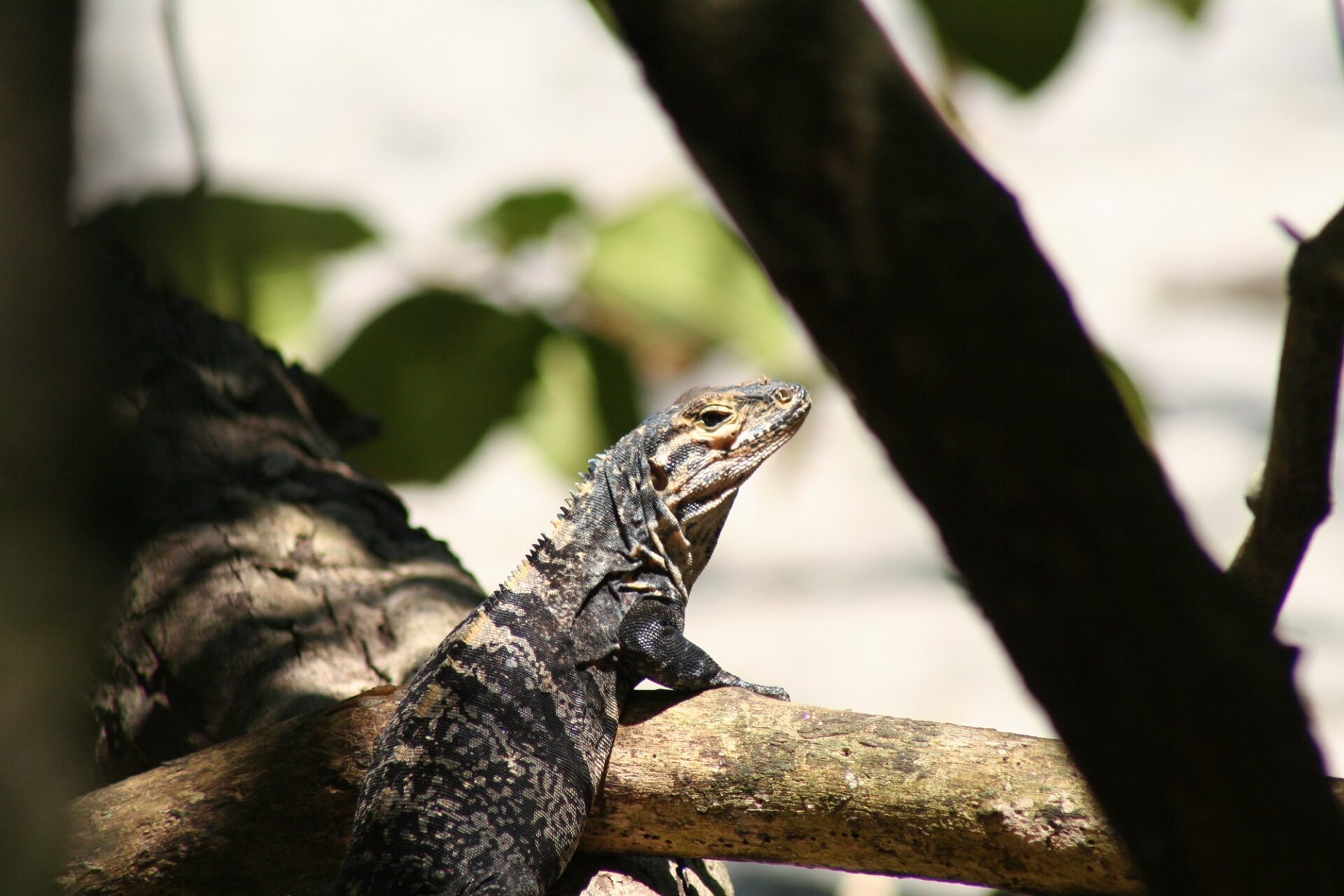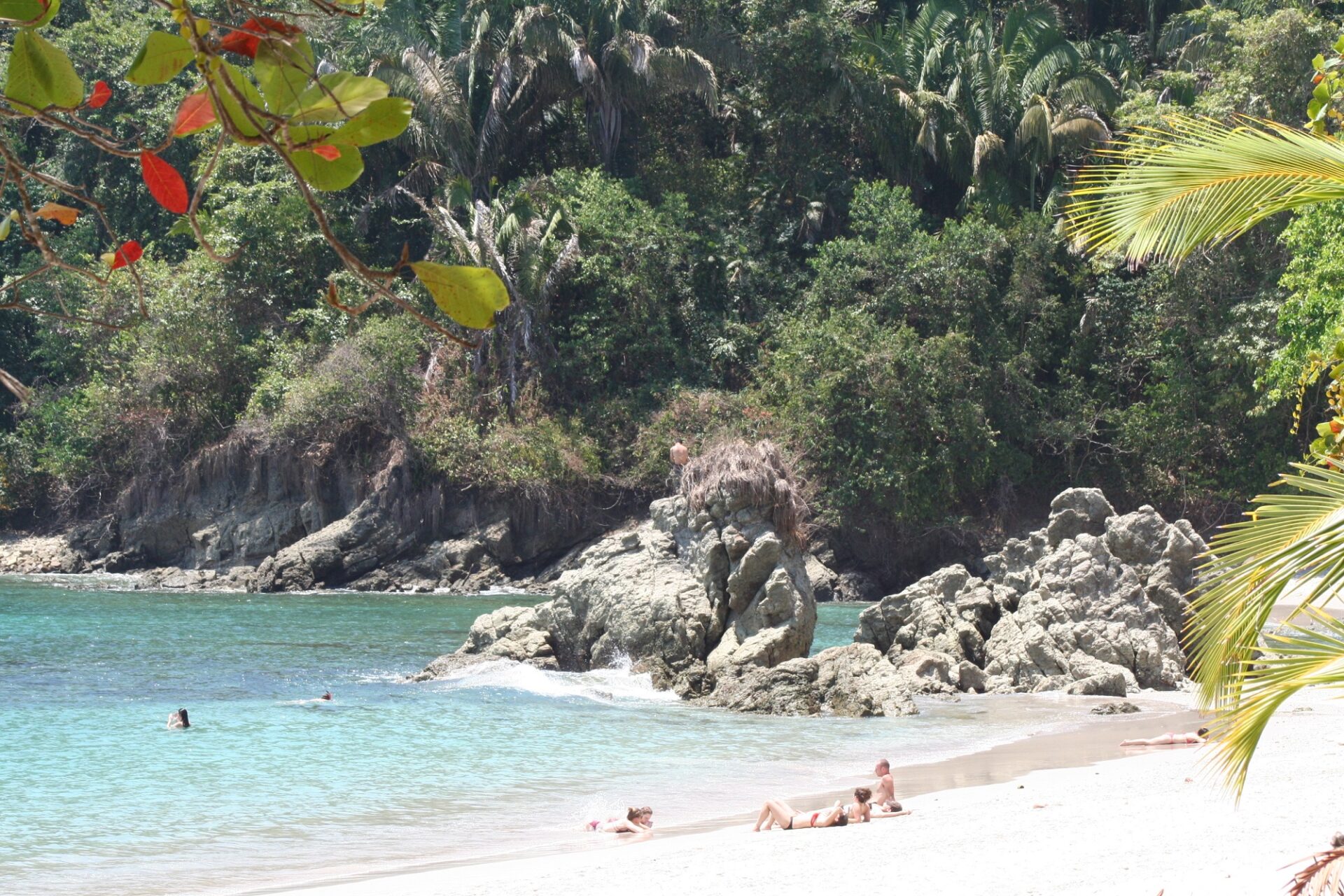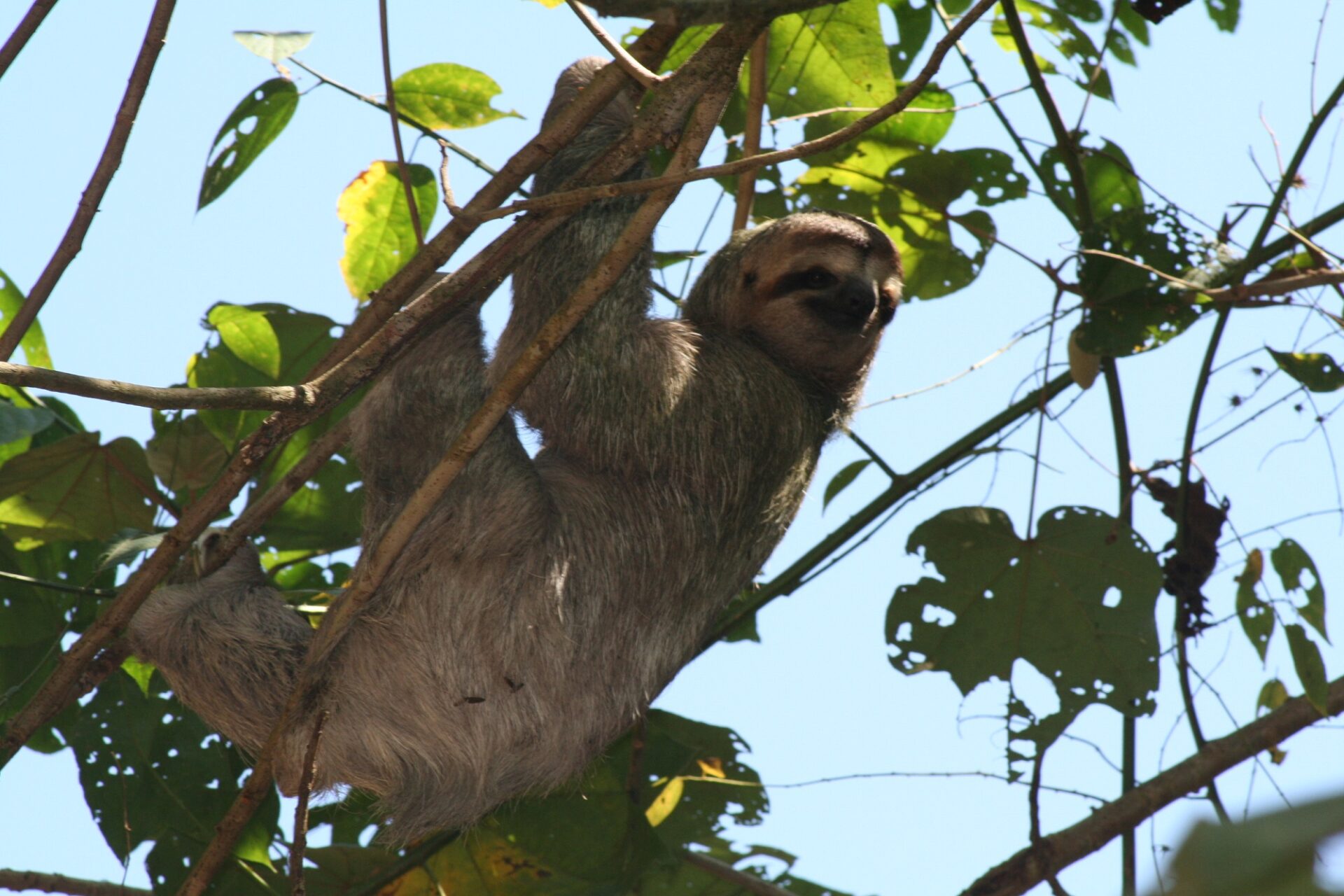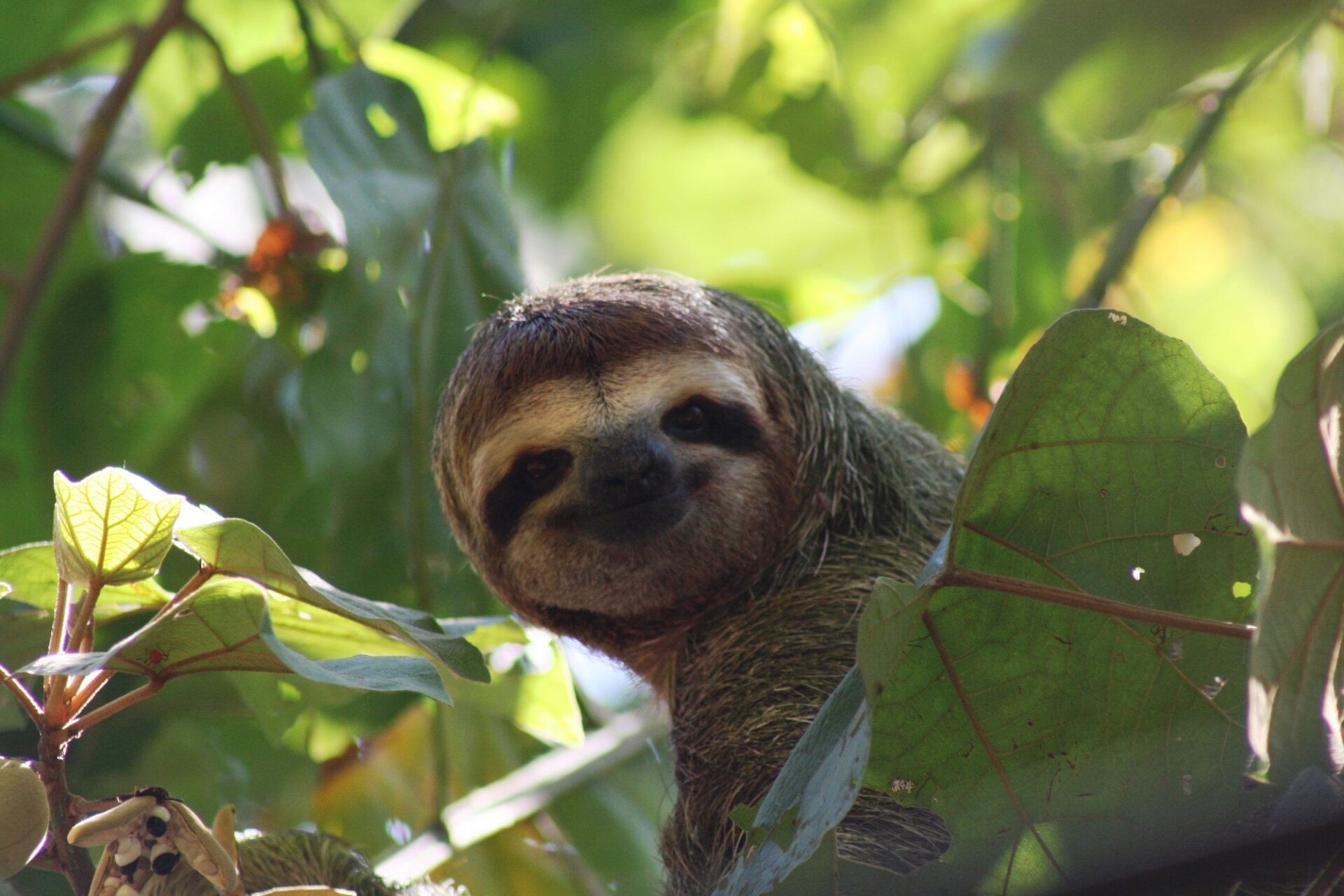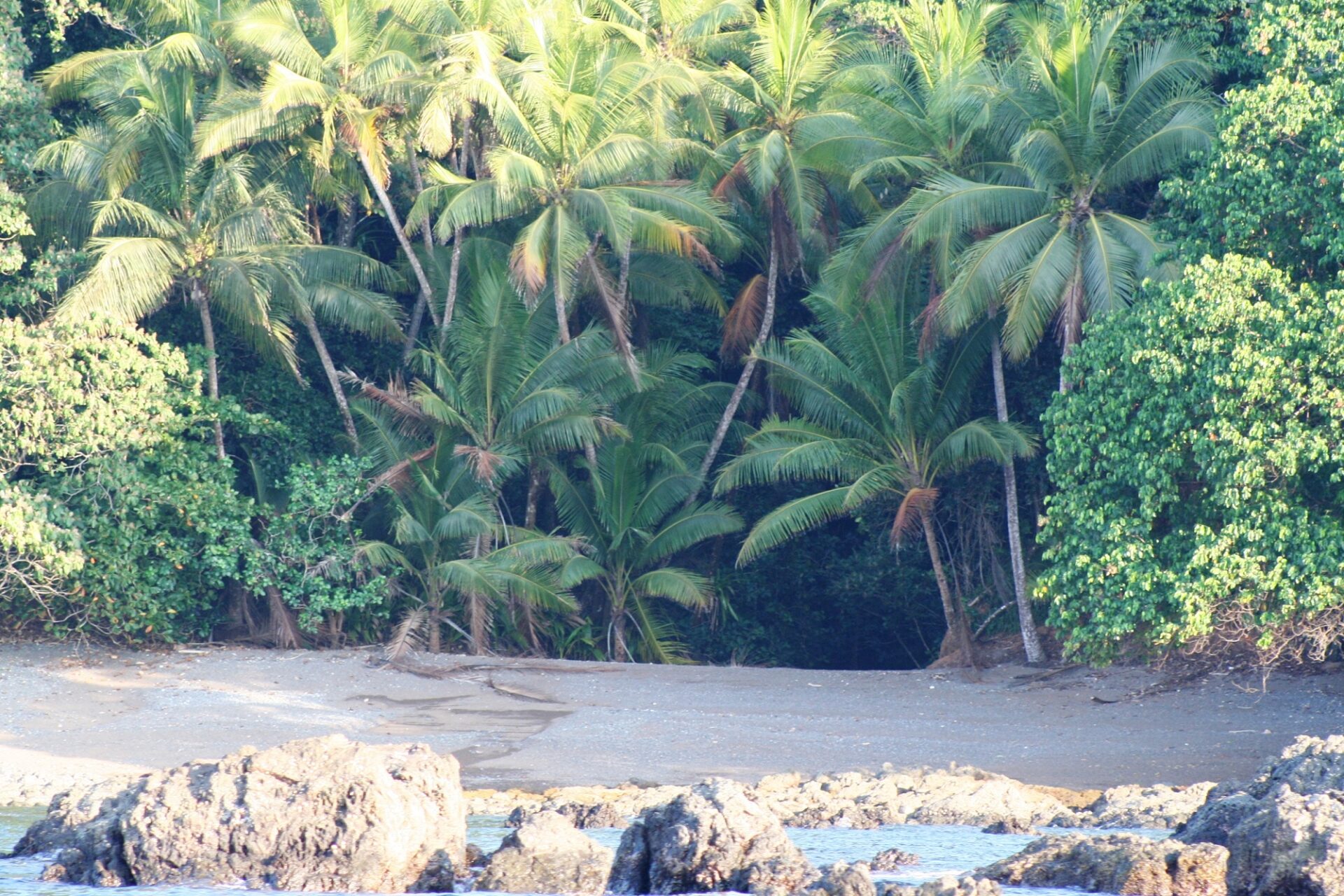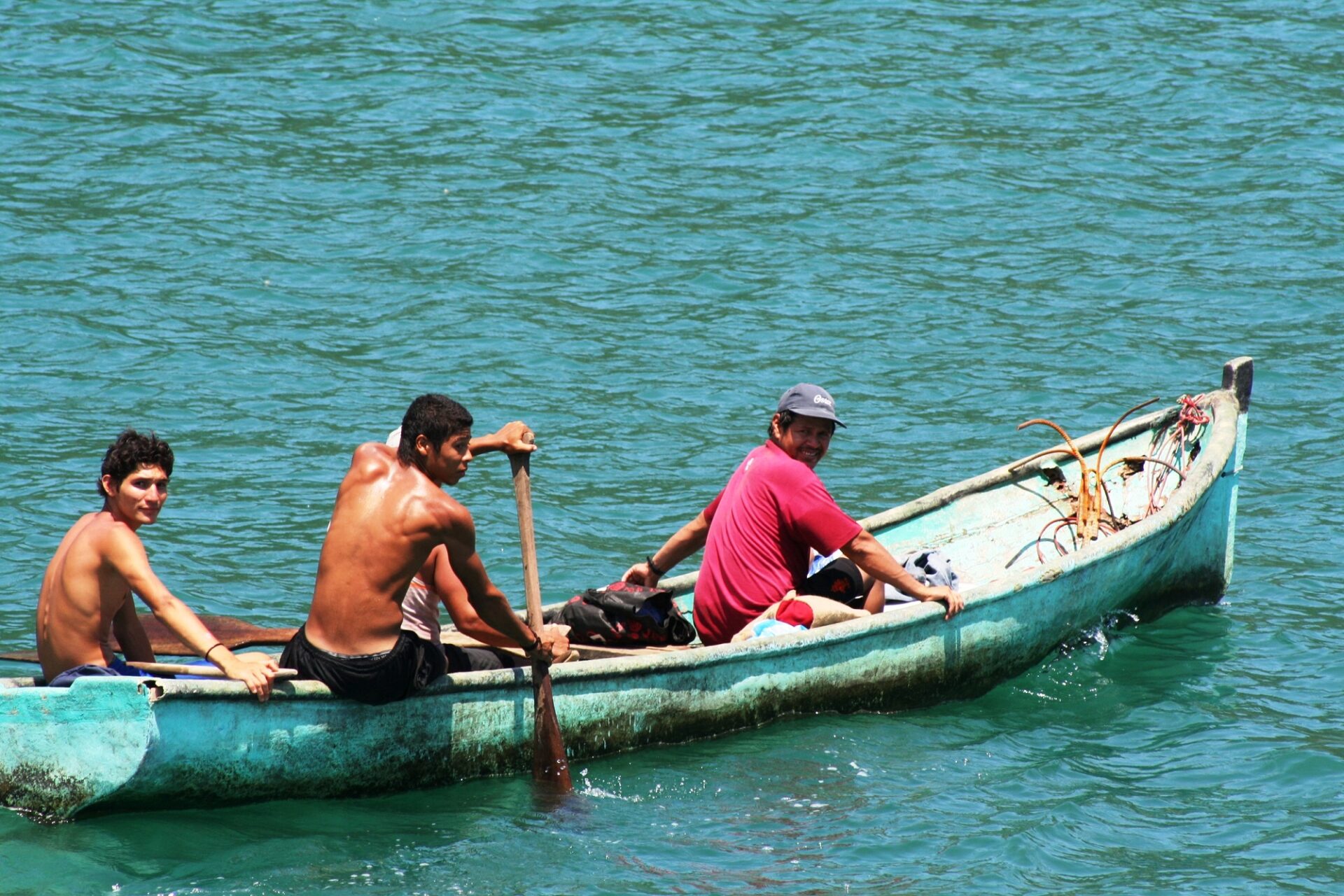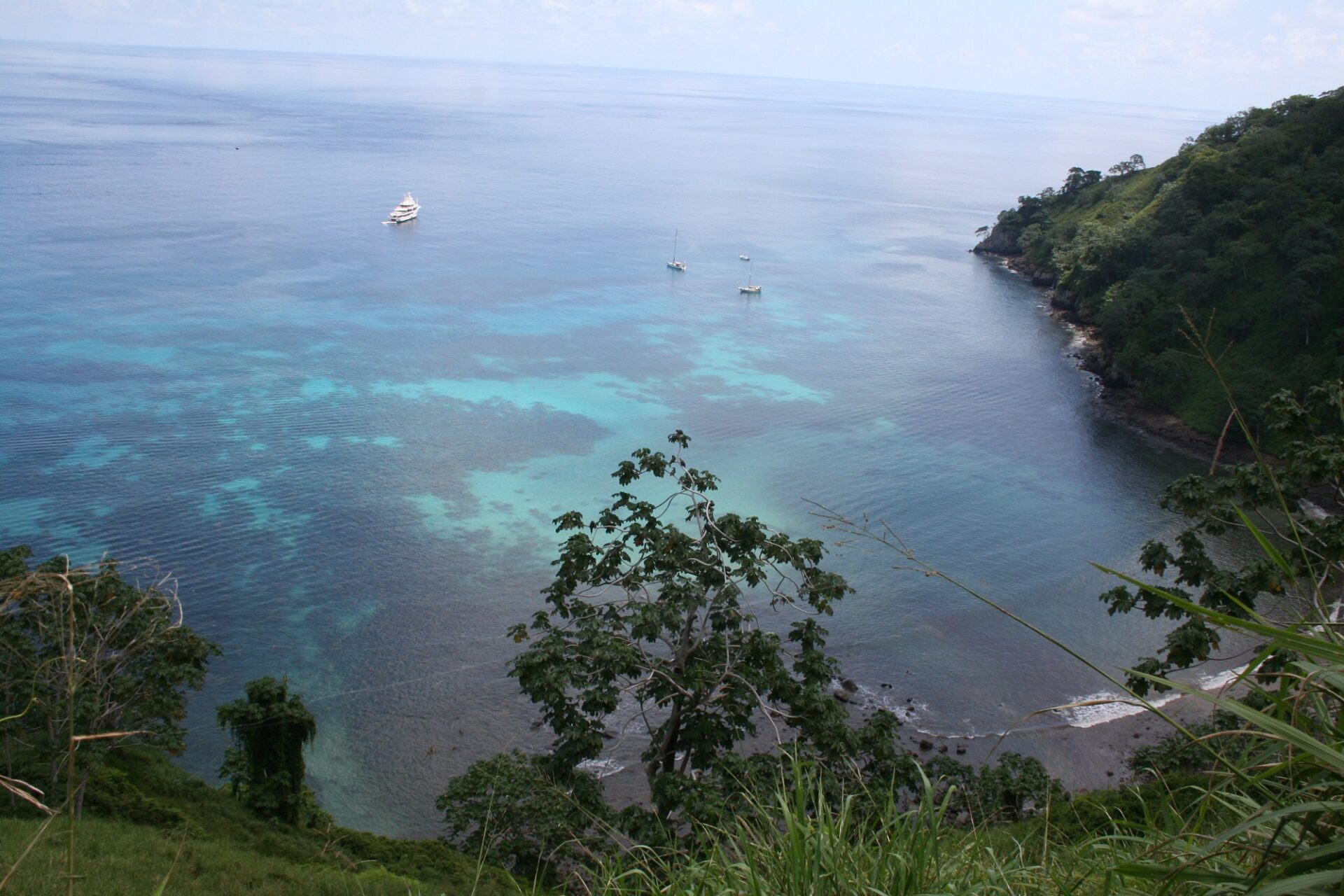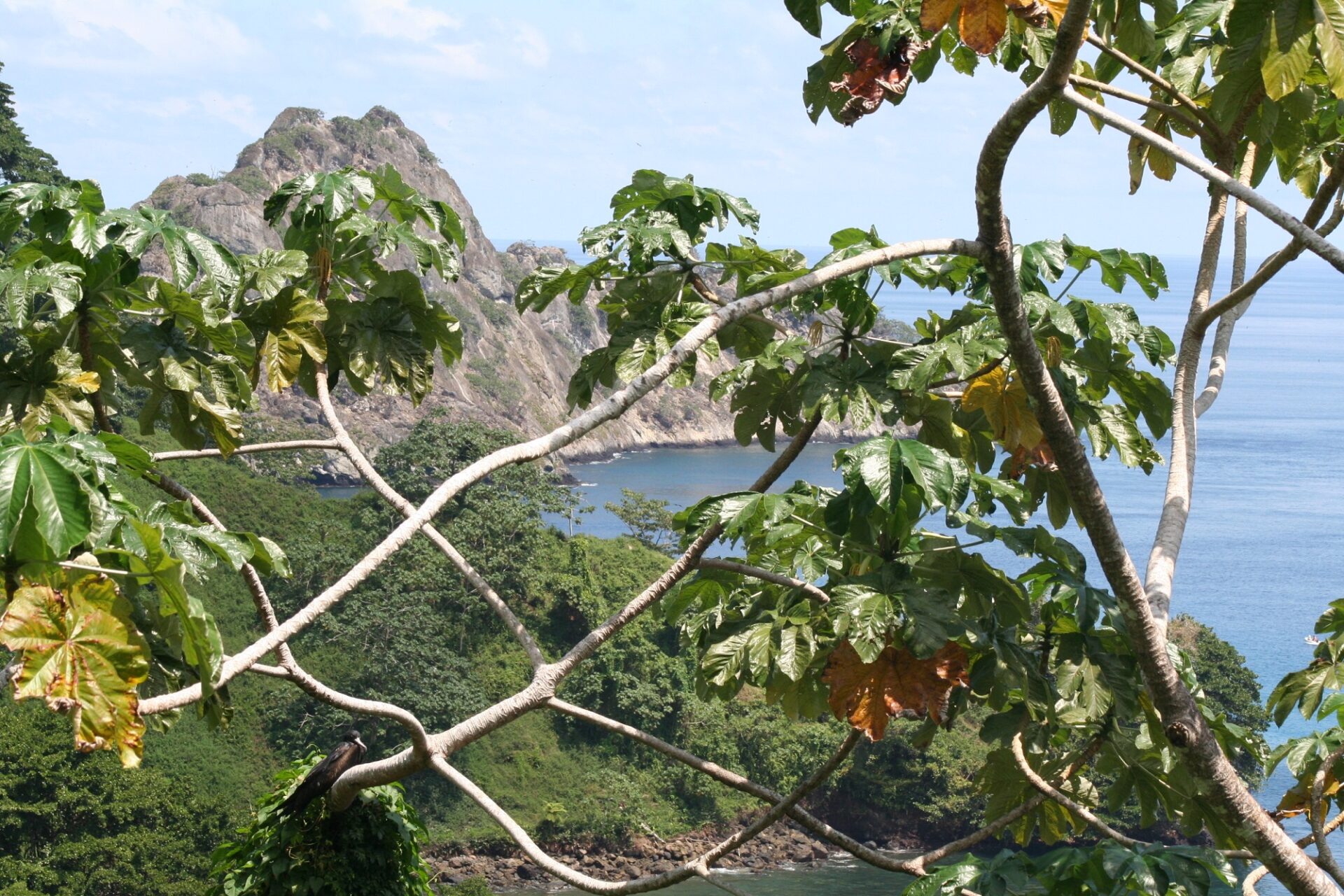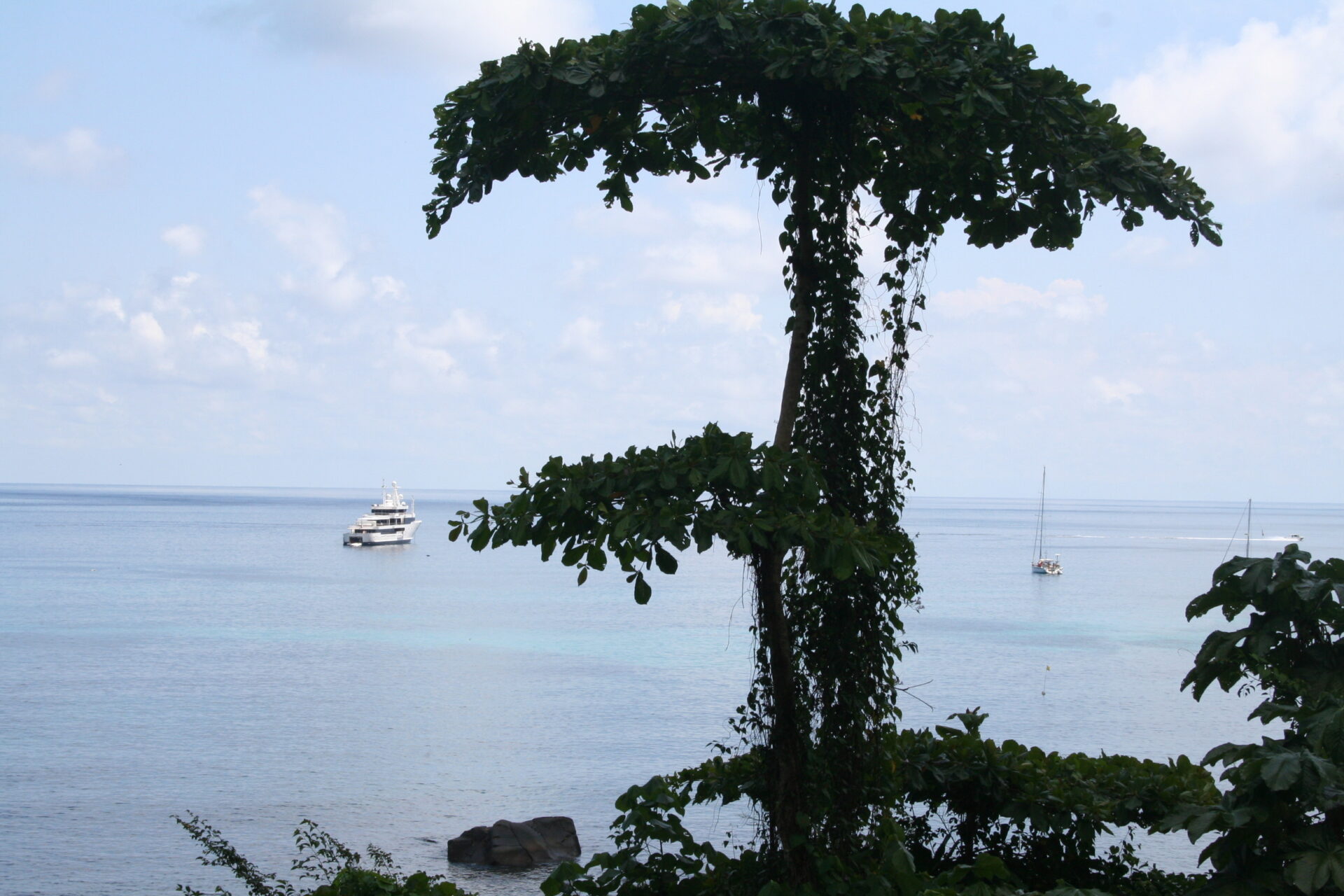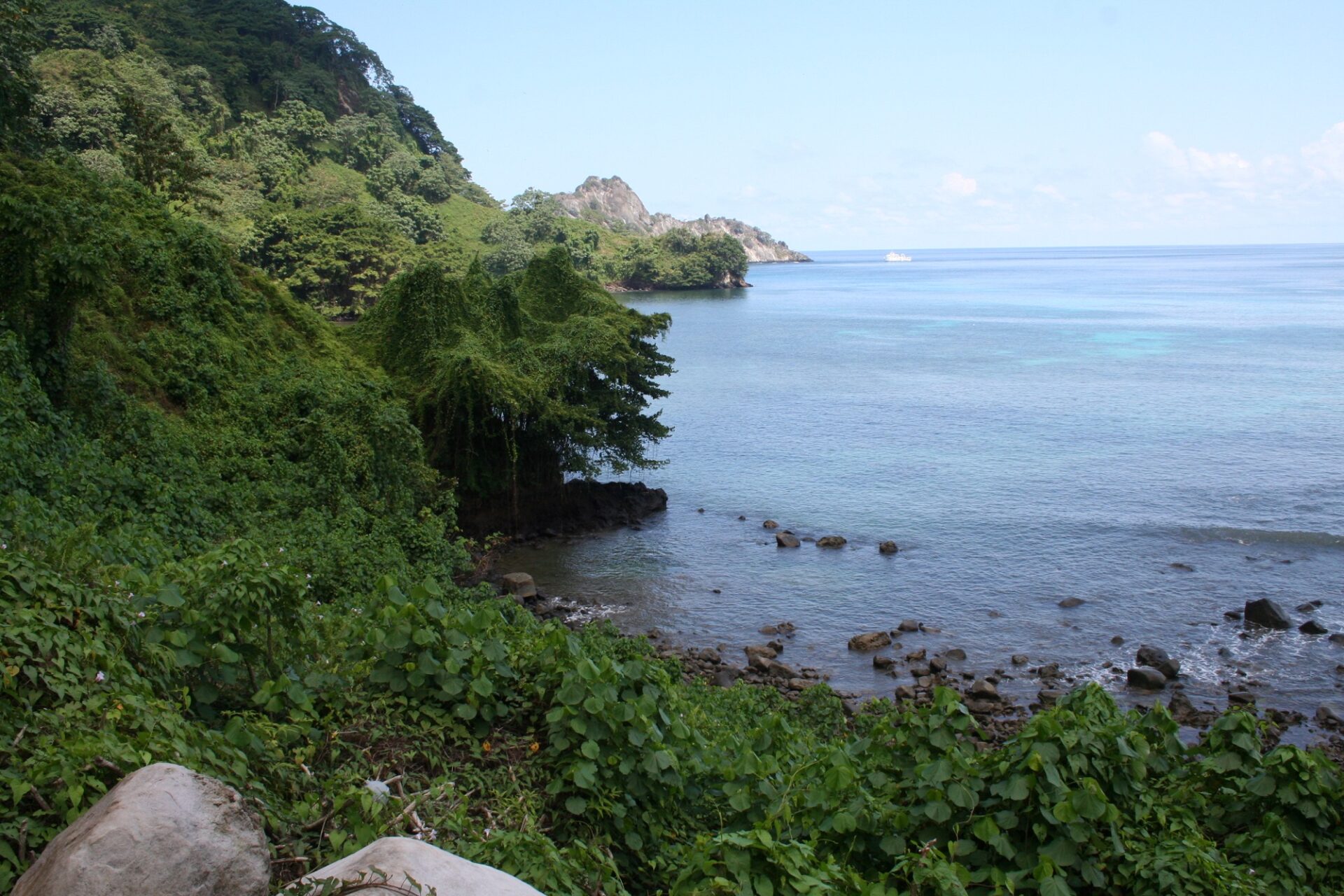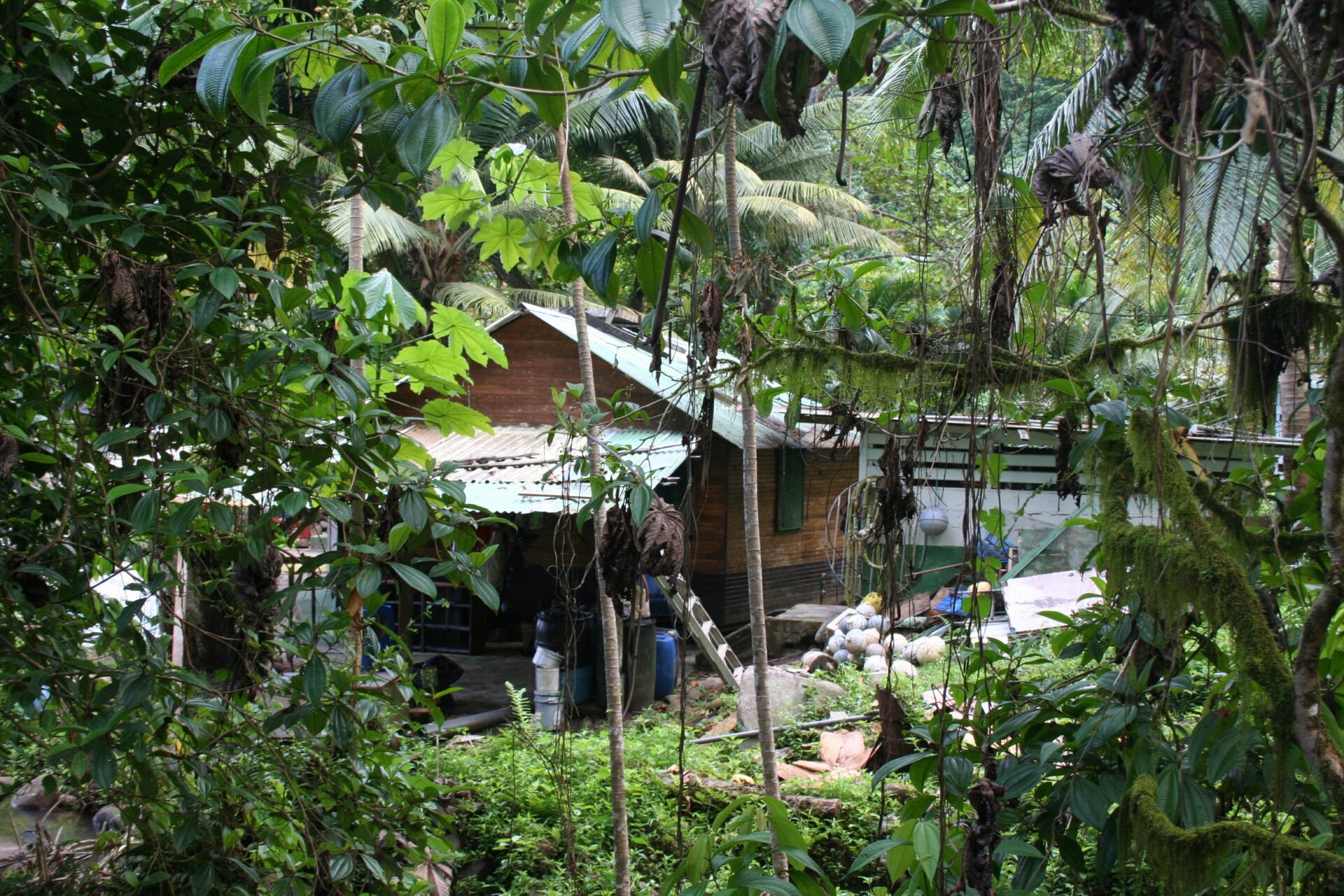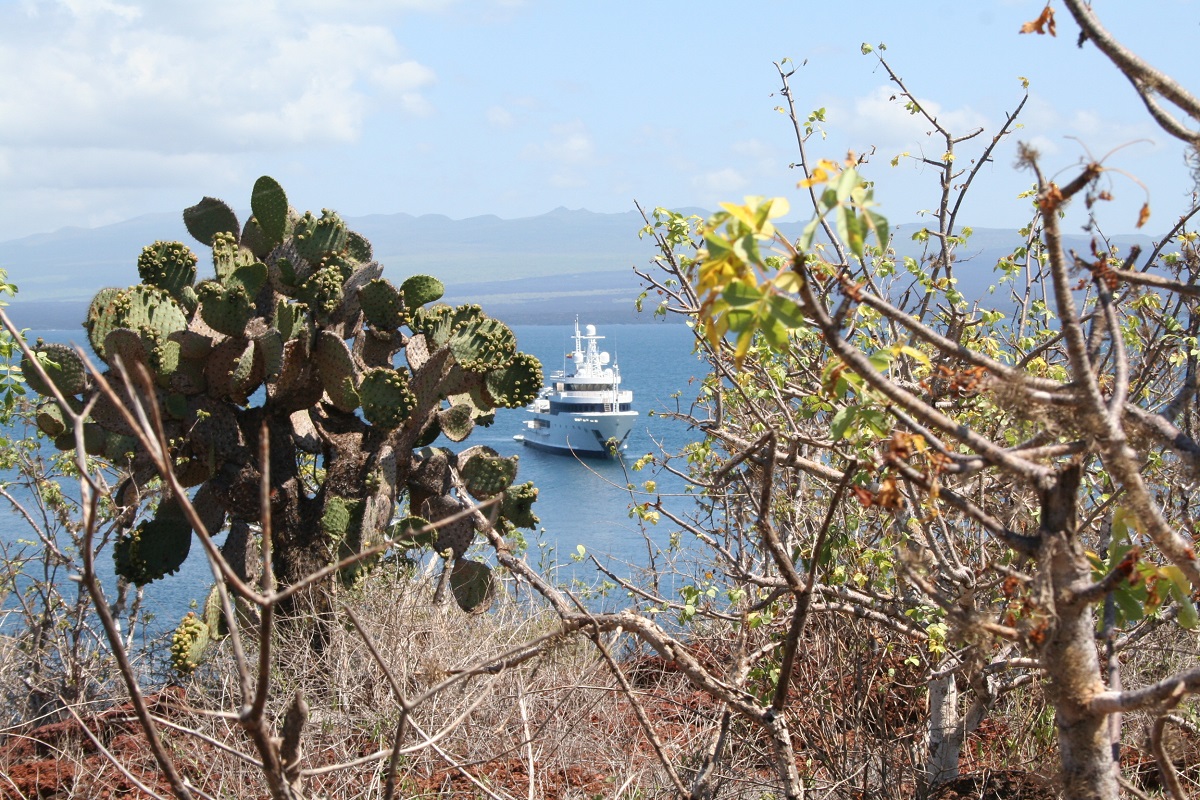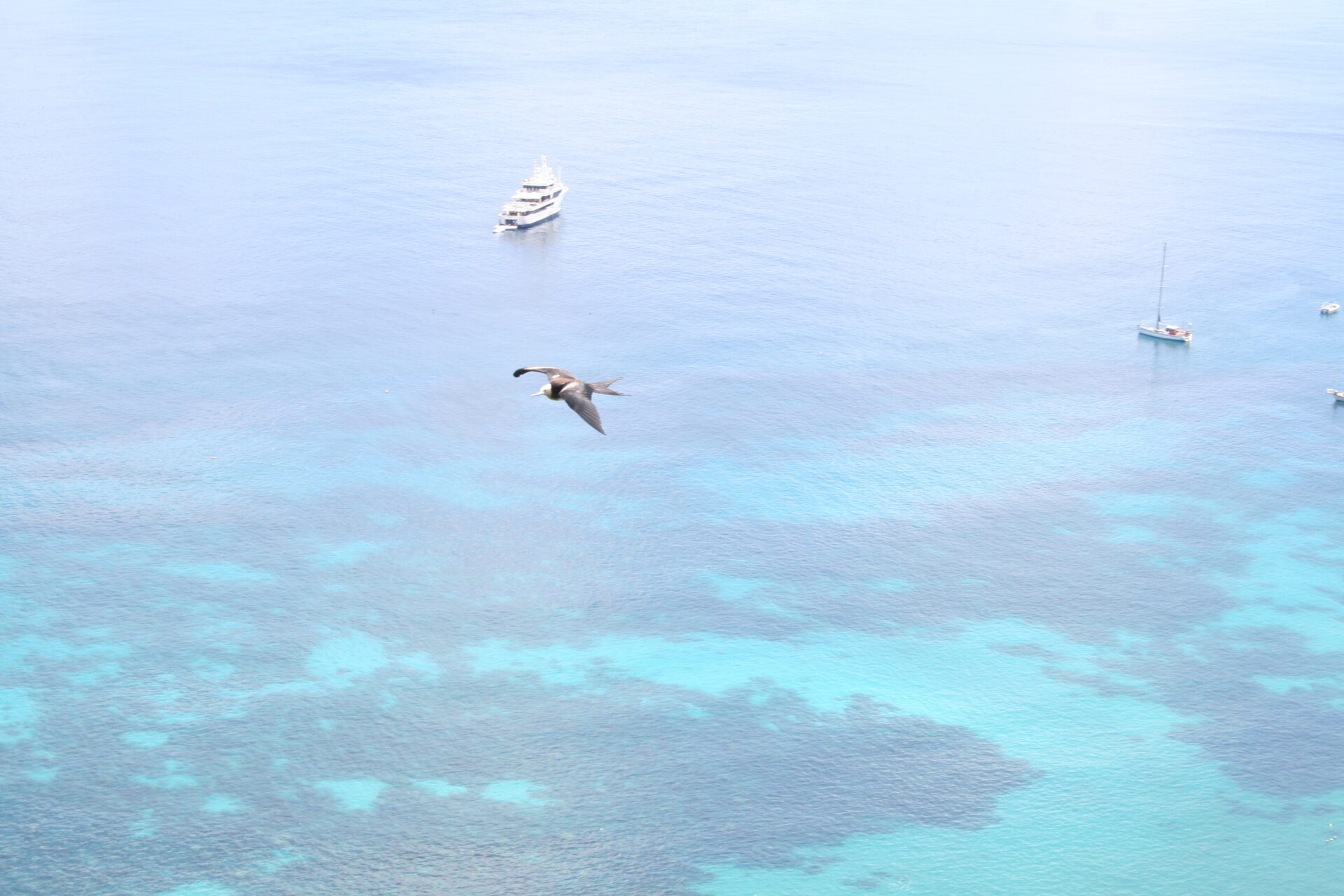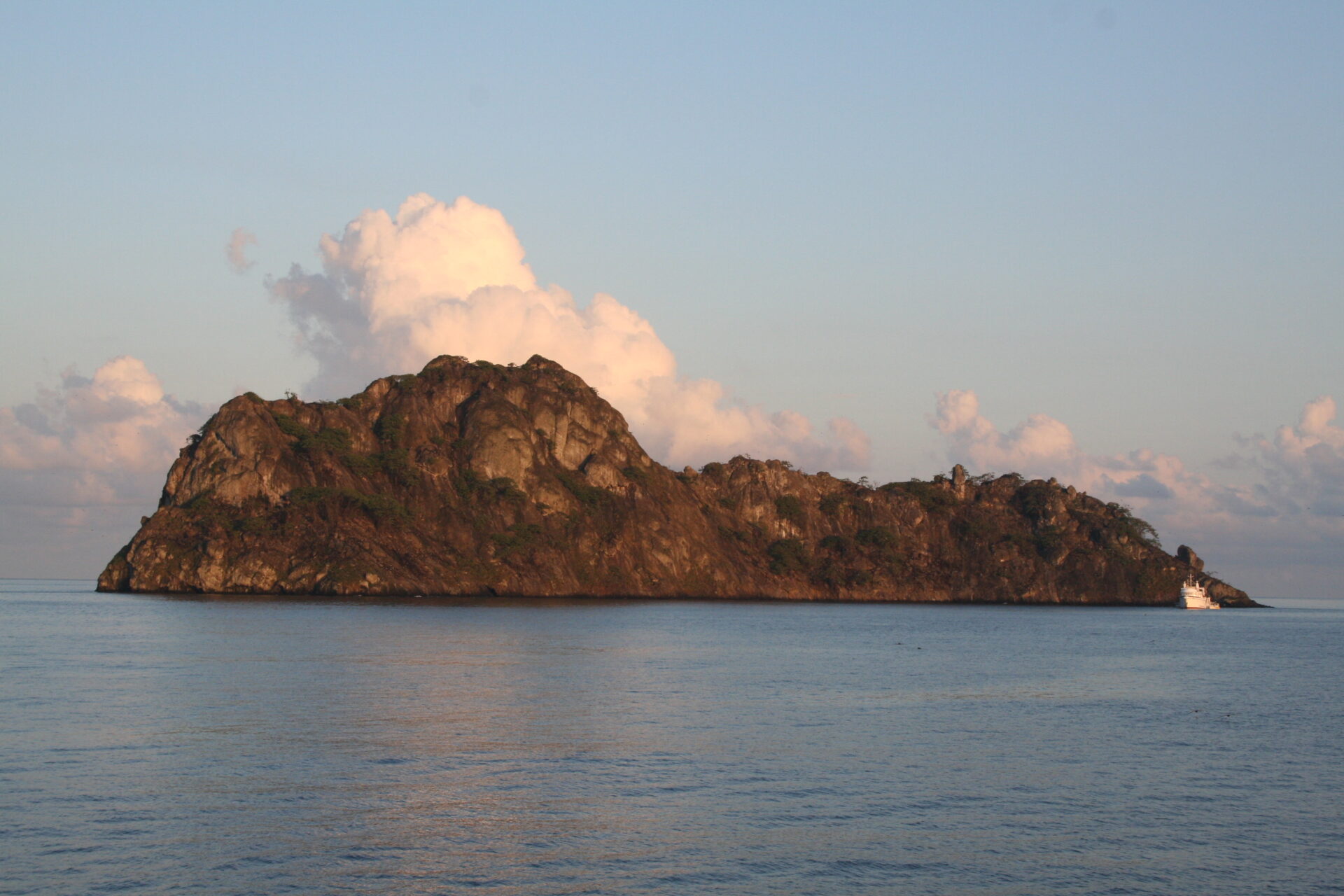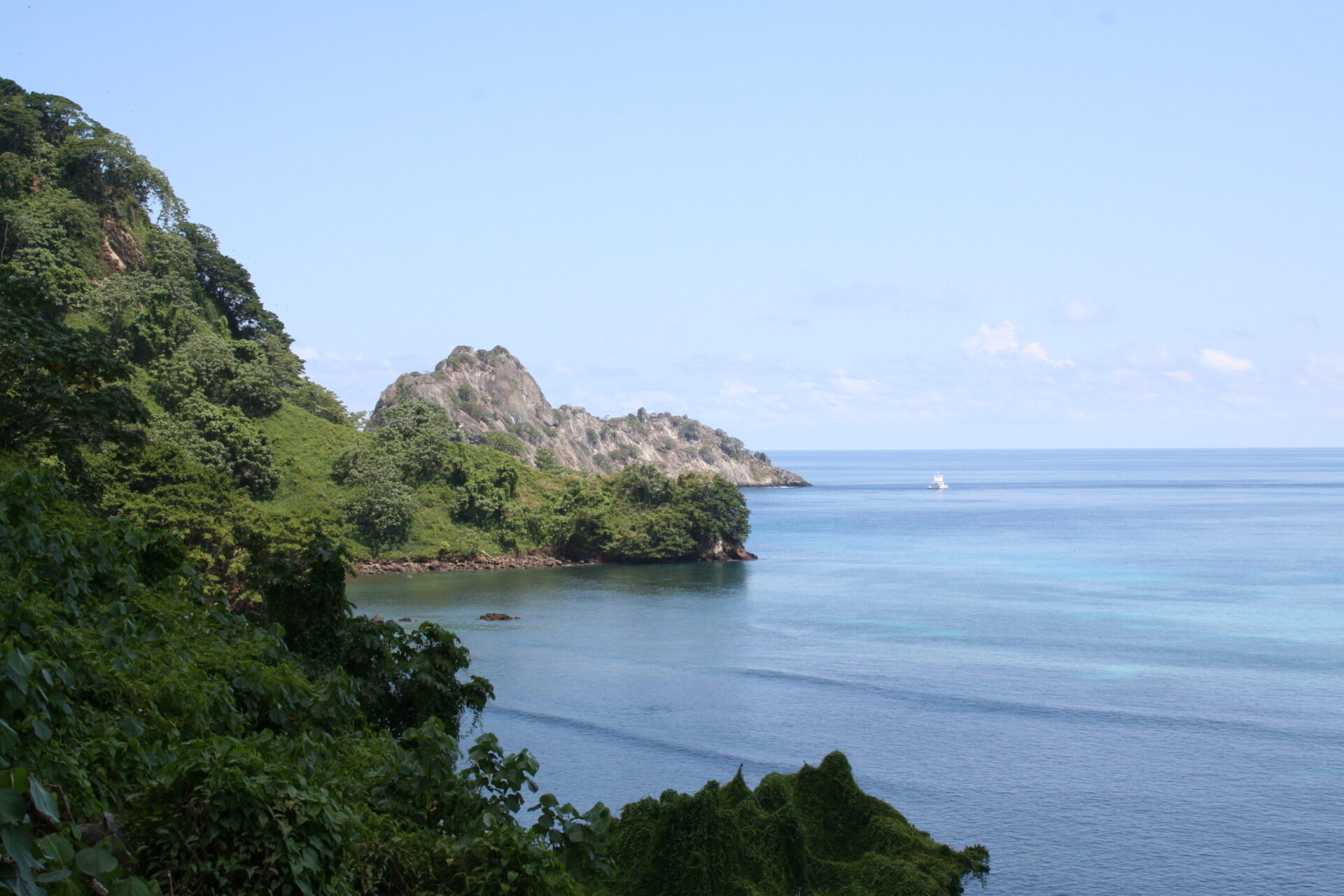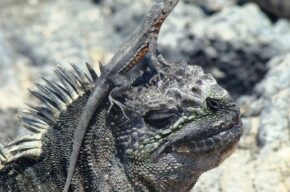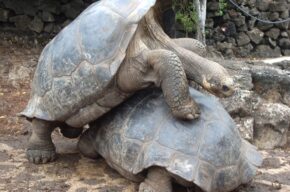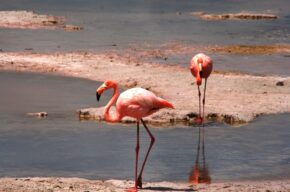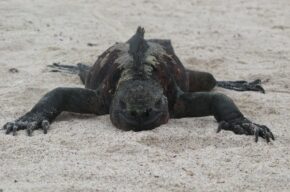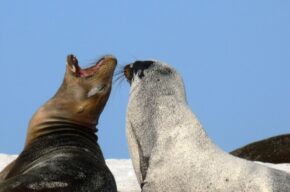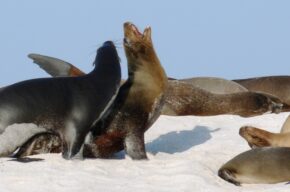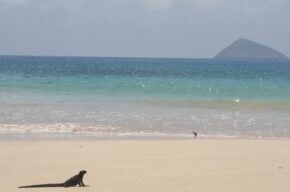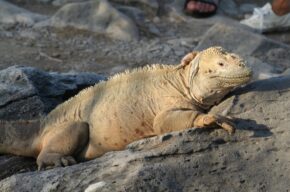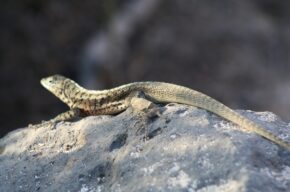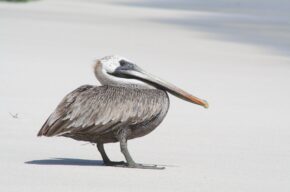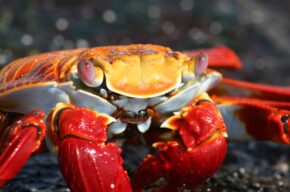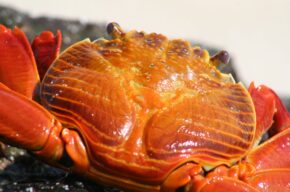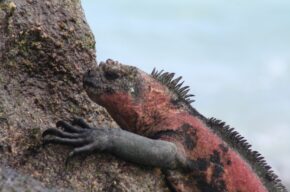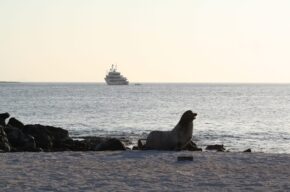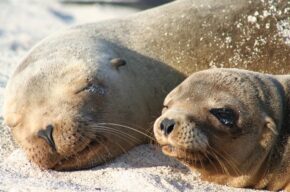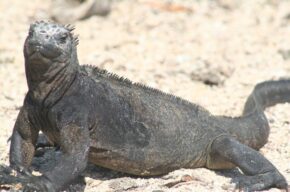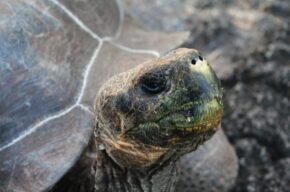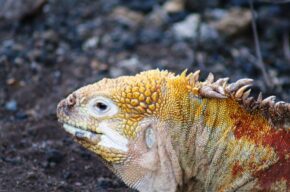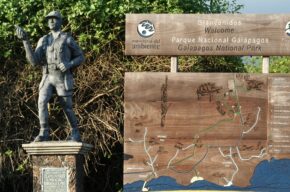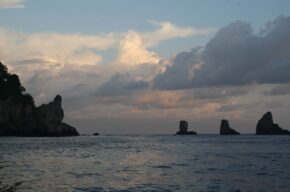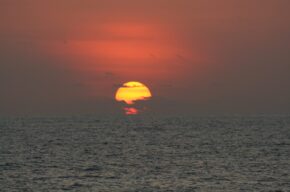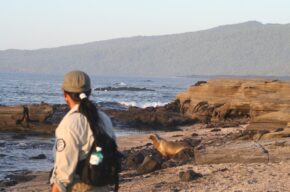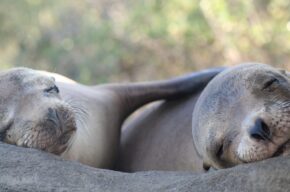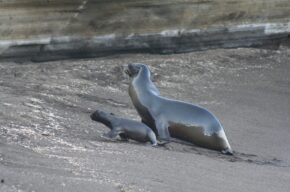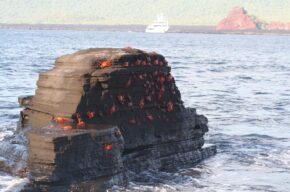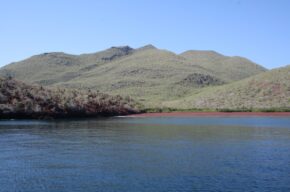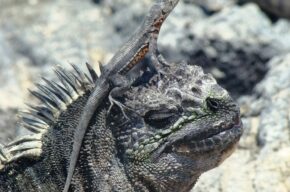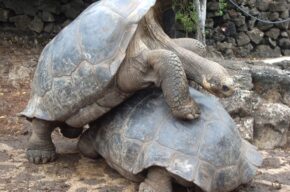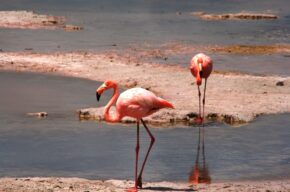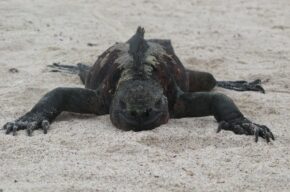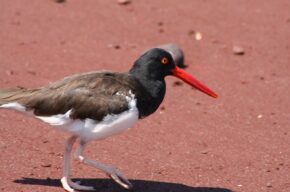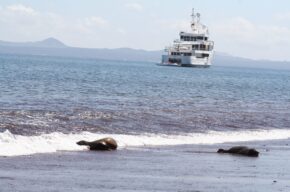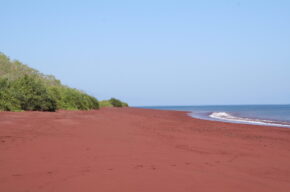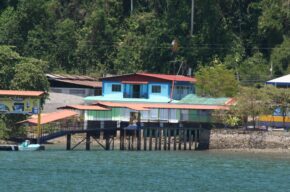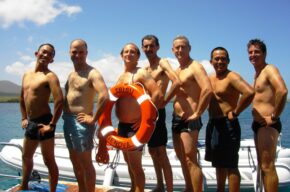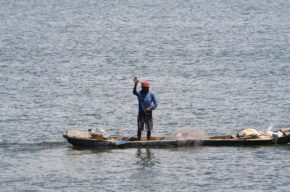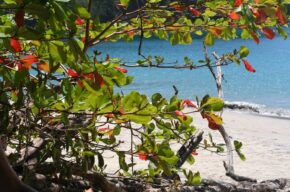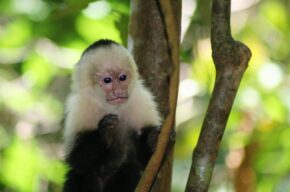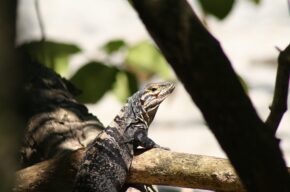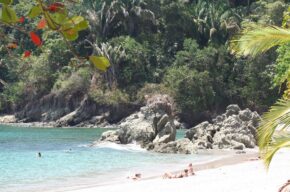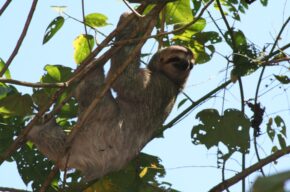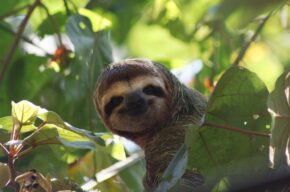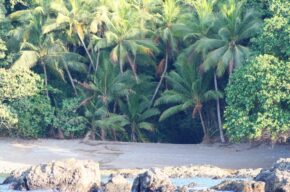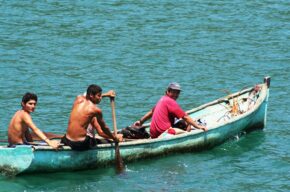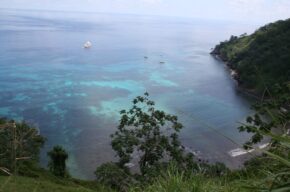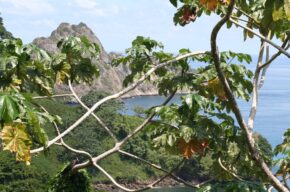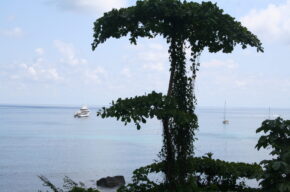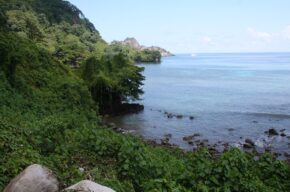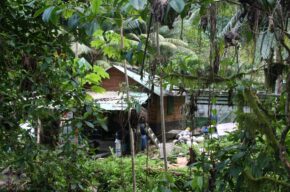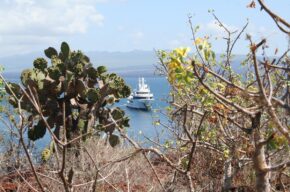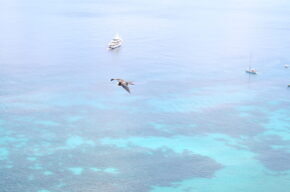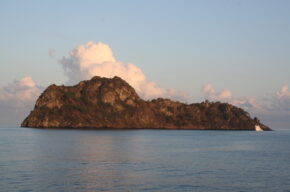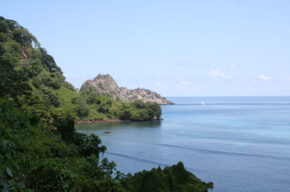Captain’s log. Travelling to the marvellous Galapagos
Surrounded by nature: “Every night while moored we had the jubilant appearance of dolphins, sharks, sea lions, and fish of every kind. It felt like we had dropped anchor in an aquarium”
We left our captain in Chile, in Puerto Montt, after he had sailed from the Atlantic to the Pacific commanding the Tribù, a 50-metre explorer yacht by Mondomarine, where he shared with us his voyage through the uncontaminated nature of Patagonia. Today, captain Luca Mosca returns to the pages of Daily Nautica to share with us another one of his stories and his beautiful images, with another marvellous journey on the edge of the world.
OFF ON A NEW ADVENTURE!
Where were we? Oh, yes, Patagonia, Puerto Montt. I remember eating the biggest seafood I had ever seen in my life in Puerto Montt. Enormous mussels, but, honestly, not very tasty ones… But I still have great memories of that town. It was like from another time, when everything was easier and slower. Having left Puerto Montt, where we had dropped off our passengers, we decided to break up the trip to Ecuador into two parts, so as to also refuel.
FIRST STOP ARICA, FOR “FAMILY MATTERS”
At that time our engineer came from Arica, in northern Chile, which was around eight days’ sail from Puerto Montt, and so we decided to go there to allow him to visit his family and loved ones for a few days.
In 1880 Arica was the setting of an epic battle between the Chilean and Peruvian-Bolivian armies, during the Pacific War. The symbol of the city is the Morro, a 200-metre high hill that overlooks the city centre, the last stronghold of the Chilean army, and where a giant flag still flies today.
The engineer was welcomed to the city like a national hero, with articles in the newspaper and visits from family and local authorities on board. Chileans are funny people…In the meantime, during our layover in Arica, hundreds of giant sea gulls covered the ship in guano and it was a relief to get back out to sea.
OFF TO ECUADOR WITH A FEW UNEXPECTED EVENTS
Having left Arica, we headed towards Guayaquil, Ecuador, where we were to meet the passengers for the next cruise. One night, while we were sailing along the coast of Peru, we heard a loud thump near the forward keel. After inspecting and having ascertained we had no visible damage, we continued on.
As soon as we arrived in Guayaquil, I had a diving inspection undertaken, which found no damage to the hull, but a slight bend in one of the propeller blades. As the blade was still whole (had we his something hard or a container, the blade would have looked different), we understood that we had probably hit something soft, possibly a sleeping whale.
These are things that happen in the high seas.
In Guayaquil, a well-known location for the sale and transfer of drugs, the police came on board to inspect the ship with trained dogs. The funny part of this was, that, not only did we give shoe covers to the police officers, but we adapted them for the dogs, so as not to damage the interiors. Obviously, one of the dogs left a gift in one of the passenger cabins, for the delight of the cleaners on board.
The change in tides in Guayaquil was and is incredible (around 3 metres). I remember that, since we were docked at a non-floating cement pier, twice a day, we had to move the walkway from the main deck to the upper deck and, obviously regulate the docking ropes. As soon as the passengers came on board, we left the port and headed out towards the Galapagos Islands.
A NEW ADVENTURE: DESITINATION GALAPAGOS!
The Galapagos are a national and marine park, a highly protected area with regulated access. For this reason we had applied for and obtained the proper visiting permissions a few months before.
After a couple of days sail, we reached Puerto Ayora, south of the island of Santa Cruz, port of entry for the documentation. There we welcomed on board the ranger who would be our guide throughout the cruise.
For vessels over a certain size it is mandatory to have a national park ranger on board, who will suggest areas to drop anchor and will guide visitors on excursions. In addition, on almost all of the islands, landing and excursions are only allowed during the day and in regulated hours.
THE GALAPAGOS ISLANDS: EXPLORING NATURE’S PARADISE
What can I say about the Galapagos? They are simply marvellous. They are nature’s paradise, a singular ecosystem, where biodiversity, flora and fauna are the boss, both in the water and on land. I can imagine the surprise and excitement that Charles Darwin must have felt when, in 1835, he stepped off the Beagle, into this enchanting place, where he collected thousands of specimens that contributed to his theory of evolution and origin of the species.
We visited Isla Mosquera, Isla Española, Isla Santa Fe, Isla Santa Maria, Isla Rabida and Isla San Salvador, both in the water and on land. Every night while moored we had the jubilant appearance of dolphins, sharks, sea lions, and fish of every kind. It felt like we had dropped anchor in an aquarium.
On land were iguanas, flamingos and turtles. We were even lucky enough to see Lonesome George, the most famous giant sea turtle in the Galapagos, who died “prematurely” at the age of 100 in 2012. I am leaving you with the images to accompany this story, which will provide a much better description of what we saw and experienced that week.
I still have the local navigation maps at home, gorgeous. I don’t know why, but I love navigational maps, especially those that have been “loved”, with the routes marked out, the pin for the ship, and the coffee rings from the thousands of cups drunk during the night shift. Probably caused by my job.
COCO ISLAND: MYTH AND TREASURE
Having left the Galapagos and heading towards Costa Rica, we decided to stop at Isla del Coco. Coco Island is a mall island located approximately 300 miles west of Costa Rica, practically uninhabited and now a national park. Legend says that it was a land of treasure for the Inca and the buccaneers, and it certainly is a treasure of nature. It is the only island in the east Pacific to be covered in a tropical rainforest.
As I mentioned the island is inhabited mostly by park rangers and a handful of student volunteers. We arrived early in the morning and dropped anchor in Chatam Bay, one of the few sheltered areas around the island. From there, after having received authorisation from the rangers, the passengers went on land using the tender and we went on an excursion around the island, where we admired the splendid flora, the view, and visited the ranger base.
The day ended with a dive, where we were lucky enough to see the famous hammerhead sharks who live in the waters around the island. Here too, I will leave the pictures with you to better describe the experience. The next morning we departed for Costa Rica.
LAST PART OF THE VOYAGE: THE LIVELY COSTA RICA
We spent less than a week in Costa Rica, but it was more than enough to appreciate its beauty, its nature, the beaches, and the happiness and light-heartedness of the people. We visited the areas around Golfito, Isla Cana, Quepos, Islas Tortugas y Herradura, with excursions to the Rio Sierpe and the Parco de Manuel Antonio, habitat of the famous sloths, who are very easy to see since they practically only stay still!
We sailed through approximate cartographic markings and, as is good practice in this type of circumstance, the tender sailed in front of us to check the depths. The passengers disembarked at the San Jose airport and we, after 2,200 miles and 175 hours of sailing in 16 days and one night, went to Marina Los Sueños for our traditional crew diner to mark the end of the cruise, and then left the next day for Acapulco, in Mexico, travelling nearly 2,000 miles, where we were to go onto our next adventure. But this is also another story for another chapter of our voyage around the Pacific.
“You don’t ask a tame seagull why it needs to disappear from time to time toward the open sea. It goes, That’s all“.
Bernard Moitessier
Captain Luca Mosca


